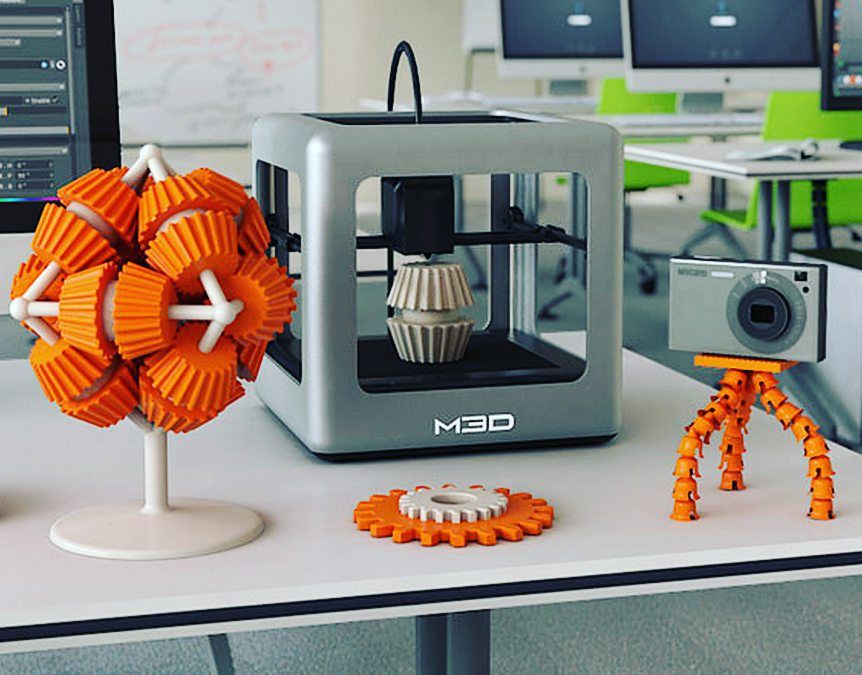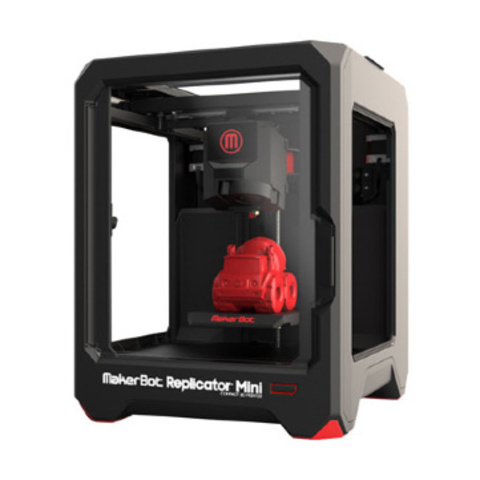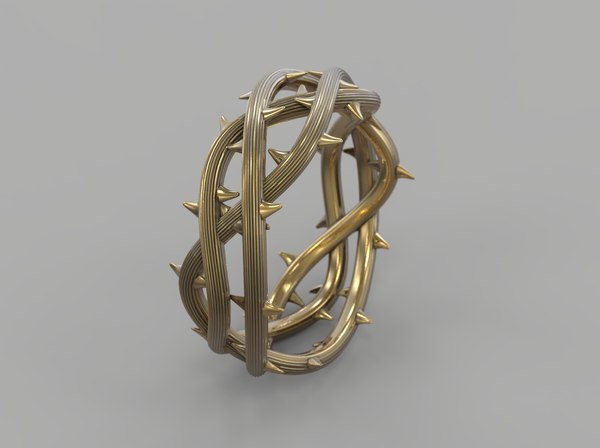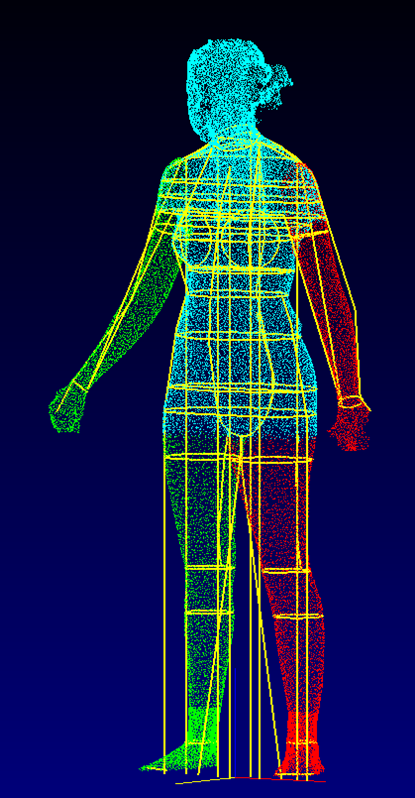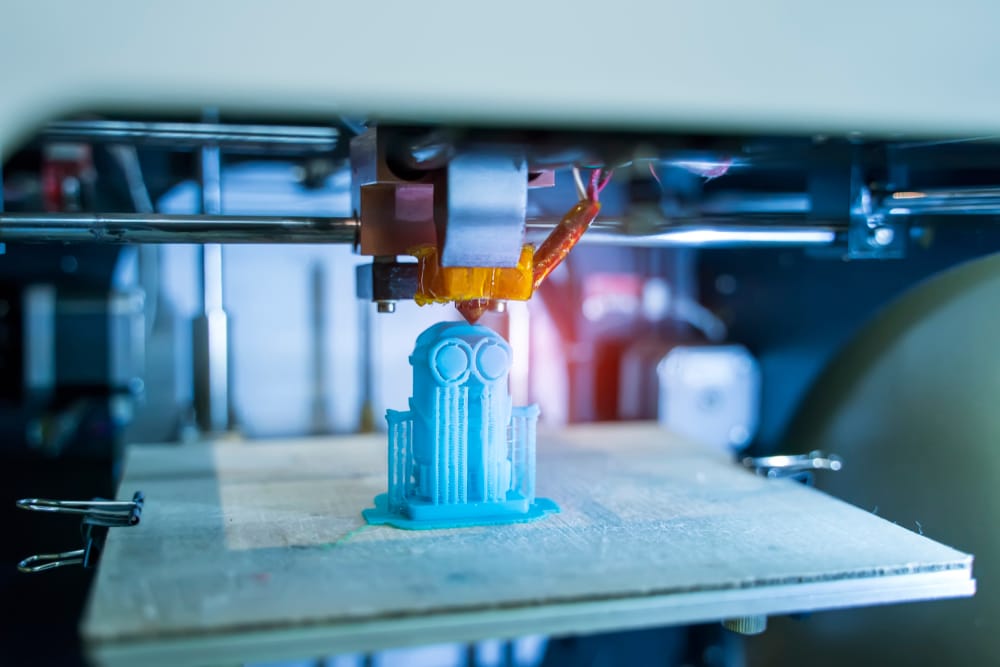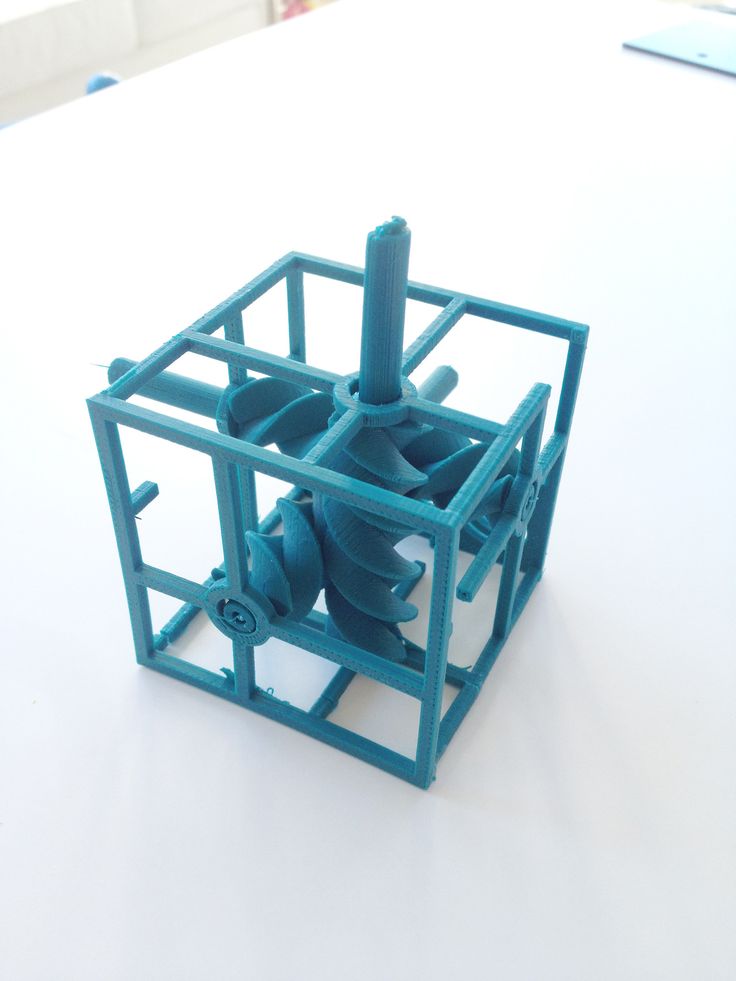Articles about 3d printing
3D printing gets bigger, faster and stronger
As a metal platform rises from a vat of liquid resin, it pulls an intricate white shape from the liquid — like a waxy creature emerging from a lagoon. This machine is the world’s fastest resin-based 3D printer and it can create a plastic structure as large as a person in a few hours, says Chad Mirkin, a chemist at Northwestern University in Evanston, Illinois. The machine, which Mirkin and his colleagues reported last October1, is one of a slew of research advances in 3D printing that are broadening the prospects of a technology once viewed as useful mainly for making small, low-quality prototype parts. Not only is 3D printing becoming faster and producing larger products, but scientists are coming up with innovative ways to print and are creating stronger materials, sometimes mixing multiple materials in the same product.
Sportswear firms, aviation and aerospace manufacturers and medical-device companies are eager to take advantage. “You’re not going to be sitting in your home, printing out exactly what you want to repair your car any time soon, but major manufacturing companies are really adopting this technology,” says Jennifer Lewis, a materials scientist at Harvard University in Cambridge, Massachusetts.
The latest techniques could be lucrative for researchers, many of whom — Lewis and Mirkin among them — are already commercializing their work. They’re also fundamentally exciting, says Iain Todd, a metallurgist at the University of Sheffield, UK. “We can get performance out of these materials that we didn’t think we could get. That’s what’s really exciting to a materials scientist. This is getting people used to the new weird.”
From trinkets to productsThe 3D printing technique is also referred to as ‘additive manufacturing’, because instead of chopping or milling a shape out of a larger block, or casting molten material in a mould, it involves building objects from the bottom up. Its advantages include less waste and an ability to print custom designs, such as intricate lattice structures, that are otherwise hard to create. Low-cost hobbyist machines print by squeezing out thin plastic filaments from heated nozzles, building up a structure layer by layer — a method known as fused deposition modelling (FDM). But the term 3D printing encompasses a much wider range of techniques. One of the oldest uses an ultraviolet laser to scan across and solidify (or ‘cure’) light-sensitive resin, layer by layer. That concept was described as far back as 1984, in a patent filed by Charles Hull2, the founder of a company called 3D Systems in Rock Hill, South Carolina.
Low-cost hobbyist machines print by squeezing out thin plastic filaments from heated nozzles, building up a structure layer by layer — a method known as fused deposition modelling (FDM). But the term 3D printing encompasses a much wider range of techniques. One of the oldest uses an ultraviolet laser to scan across and solidify (or ‘cure’) light-sensitive resin, layer by layer. That concept was described as far back as 1984, in a patent filed by Charles Hull2, the founder of a company called 3D Systems in Rock Hill, South Carolina.
The latest techniques — including Mirkin’s — still use light-sensitive resin, but are faster and larger-scale, following improvements reported in 2015 by a team led by Joseph DeSimone, a chemist and materials scientist at the University of North Carolina at Chapel Hill3. Early printers were slow, small-scale and prone to producing layered, imperfect and weak structures. These found a niche in rapid prototyping, making plastic model parts as mock-ups for later production by conventional methods.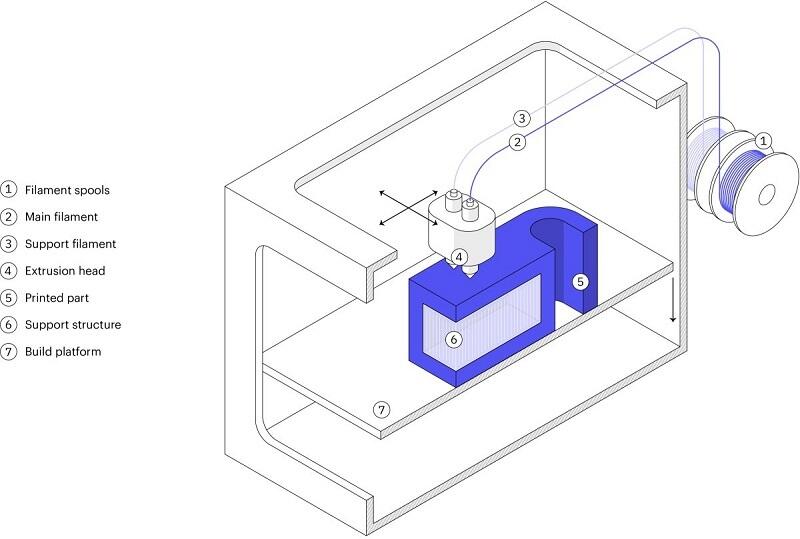 As an area of research, this kind of printing wasn’t thrilling, says Timothy Scott, a polymer scientist at Monash University in Melbourne, Australia: “Basically making trinkets and knick-knacks. For a polymer chemist, it was pretty dull.”
As an area of research, this kind of printing wasn’t thrilling, says Timothy Scott, a polymer scientist at Monash University in Melbourne, Australia: “Basically making trinkets and knick-knacks. For a polymer chemist, it was pretty dull.”
In 2015, Joseph DeSimone at the University of North Carolina at Chapel Hill unveiled a technique to speed up 3D printing.Credit: Carbon 3D Inc.
Then DeSimone unveiled a way to print light-sensitive resin up to 100 times faster than conventional printers3. It uses a stage submerged in a vat of resin. A digital projector shines a pre-programmed image up at the stage through a transparent window in the floor of the vat. The light cures an entire resin layer at once. DeSimone’s advance was to make the window permeable to oxygen. This kills the curing reaction and creates a thin buffer layer, or ‘dead zone’, just above the window’s surface so that the resin doesn’t stick to the bottom of the vat each time a layer is printed. The stage rises continually, pulling the completed part up through the liquid as new layers are added at the bottom.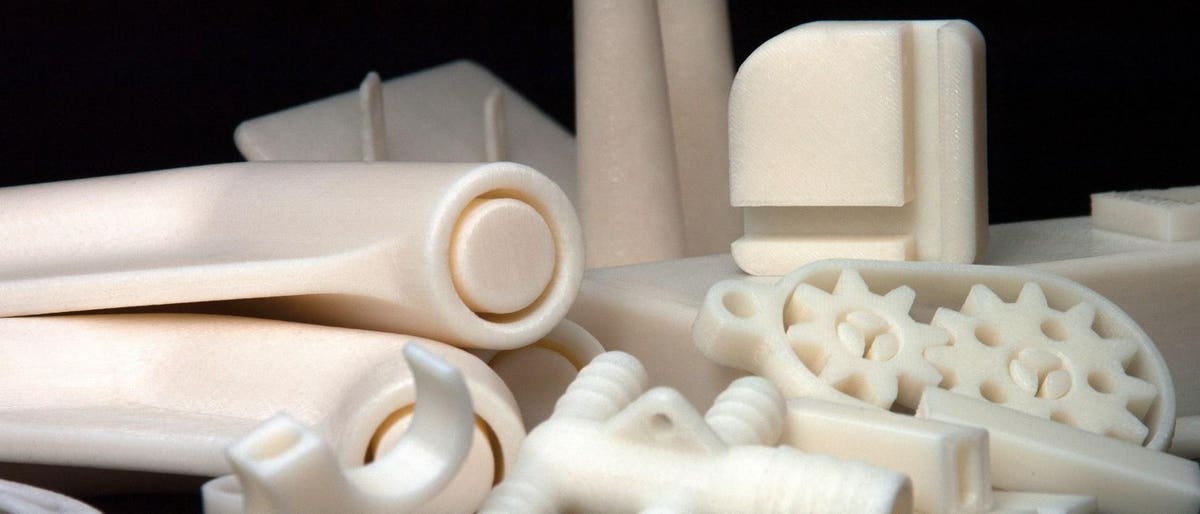
Other labs were working on similar concepts at the time, says Lewis. But perhaps most impressive about DeSimone’s resins was that they could undergo a second reaction in a post-print heat treatment to strengthen the finished product. “It opens up a much broader array of materials,” says Lewis.
Forget everything you know about 3D printing — the ‘replicator’ is here
Many research groups and firms have since built on the work. Mirkin’s printer pumps a layer of clear oil across the bottom of the vat to inhibit the polymer’s reactions. This also acts as a coolant, removing heat that can deform a printed part — and it means that the equipment is not limited to printing with resins that are inhibited by oxygen. He says the printer produces material ten times faster than DeSimone’s. And last January, Scott and his colleague Mark Burns at the University of Michigan in Ann Arbor reported a printer that inhibits the reactions by mixing into the resin a chemical that can be activated by a second lamp emitting a different wavelength of light4.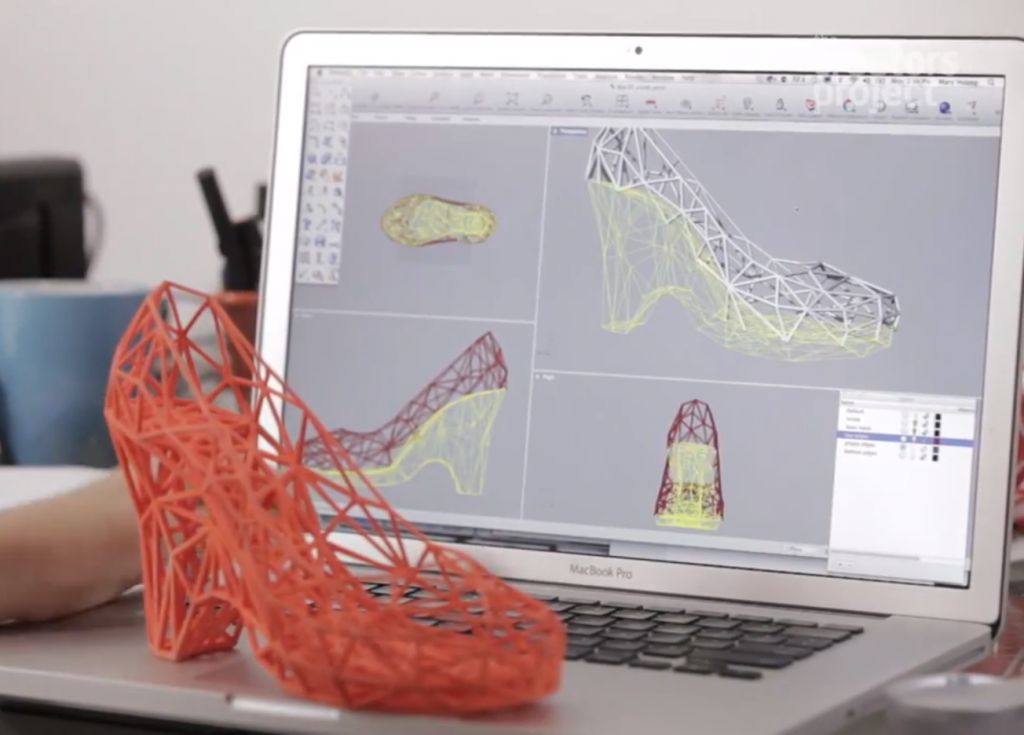 By varying the ratio of the strength of the two light sources, the researchers can control the thickness of the photo-inhibited zone, allowing the creation of more complicated patterns, such as surfaces embossed with seals or logos.
By varying the ratio of the strength of the two light sources, the researchers can control the thickness of the photo-inhibited zone, allowing the creation of more complicated patterns, such as surfaces embossed with seals or logos.
Inventions in 3D printing often have rapid commercial potential: some researchers start forming companies before they publish their advances. On the same day DeSimone’s paper was published, for instance, he showcased it at a TED talk in Vancouver, Canada, and officially launched his start-up firm Carbon 3D in Redwood City, California, although he had quietly registered the company two years earlier. The firm is now one of the biggest start-ups in 3D printing; it has already raised US$680 million in publicly disclosed funding rounds, and is reportedly valued at $2.4 billion. It has high-profile contracts with Adidas to make rubber-like midsoles for athletic shoes, and with sports-gear firm Riddell to manufacture customized helmet padding for American-football players.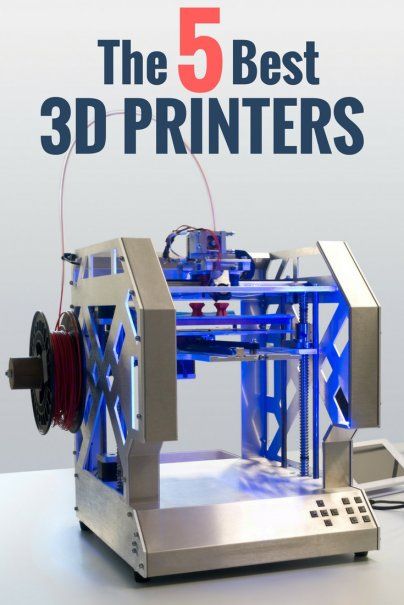
Carbon 3D’s technology is used to print Adidas shoes (left) and padding for American football helmets (right).Credit: Carbon 3D Inc.
Mirkin and his colleagues James Hedrick and David Walker have also launched a start-up, Azul 3D in Evanston, Illinois, to commercialize their technique, which they have dubbed HARP (high-area rapid printing). And Scott and Burns are preparing a commercial prototype printer with their Ann Arbor-based start-up Diplodocal, a name derived from the Greek for ‘double beam’.
New resin-printing techniques are still emerging. One begins with a small spinning glass holding liquid resin. As the glass rotates, a projector shines a loop of video onto it that corresponds to 2D slices of the desired object. Within seconds, the final object solidifies inside the liquid resin — no layers necessary5. The method is inspired by X-rays and computed-tomography scans, which image a cross-section of a solid object. This is the inverse: back-projecting cross-sections to form a 3D object.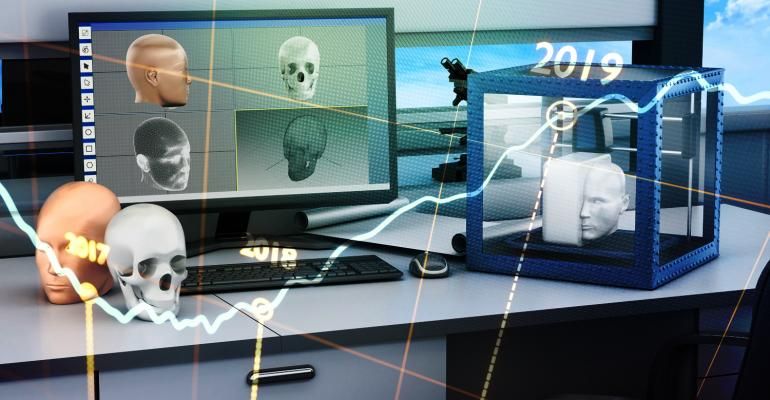
A projector shines a video loop onto liquid resin, causing an entire object to be created at once, rather than layer by layer.Credit: UC Berkeley
Even in this fast-moving field, the technique turned heads for what Lewis calls “the gee-whiz factor”. It has significant limitations: the resin used must be transparent, and the printed object must be small enough for light to pass through it to cure it. But it also has a potential advantage: it can handle highly viscous resins, which other resin-based printers struggle to suck through the narrow dead zone. That means it could make stronger materials and more accurate prints.
The approach has garnered substantial interest from industry, says Christopher Spadaccini, a materials and manufacturing engineer at Lawrence Livermore National Laboratory (LLNL) in California. Spadaccini was a member of the team that published the work last January5. A group at the Swiss Federal Institute of Technology in Lausanne (EPFL) independently developed the same concept, and has also reported a demonstration of it6.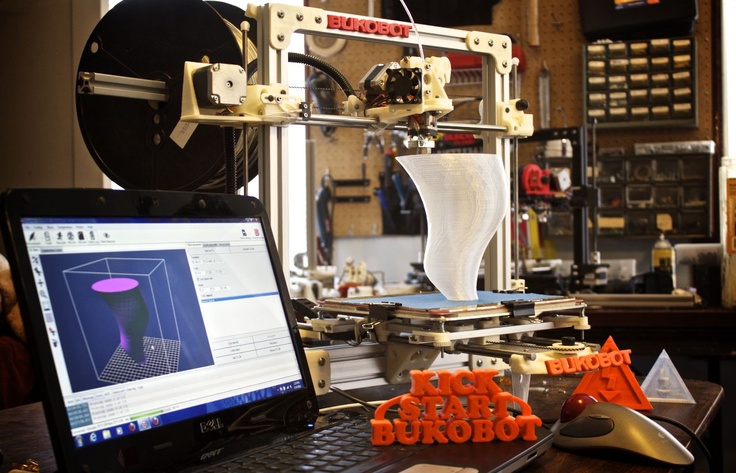 Spadaccini thinks the technology has tremendous commercial potential because it has modest hardware requirements. “In the end, really, what you need is a halfway-decent projector and a rotating stage,” he says.
Spadaccini thinks the technology has tremendous commercial potential because it has modest hardware requirements. “In the end, really, what you need is a halfway-decent projector and a rotating stage,” he says.
While chemists work on smarter ways to 3D-print intricate resins, engineers are pushing boundaries in 3D printing of concrete — using computers and robots to precisely automate the pouring process.
A 3D-printed concrete pedestrian bridge developed by Tsinghua University.Credit: Imaginechina/Shutterstock
The world’s first 3D-printed concrete pedestrian bridge was made by researchers at the Institute for Advanced Architecture of Catalonia in Barcelona, Spain, and installed in a park in Alcobendas, near Madrid, in 2016. Twelve metres long, the bridge features a lattice structure designed with algorithms that maximize strength and reduce the amount of material needed. Other teams have made similar structures, including a 26-metre-long bridge in Shanghai, China, produced by engineers at Tsinghua University in Beijing.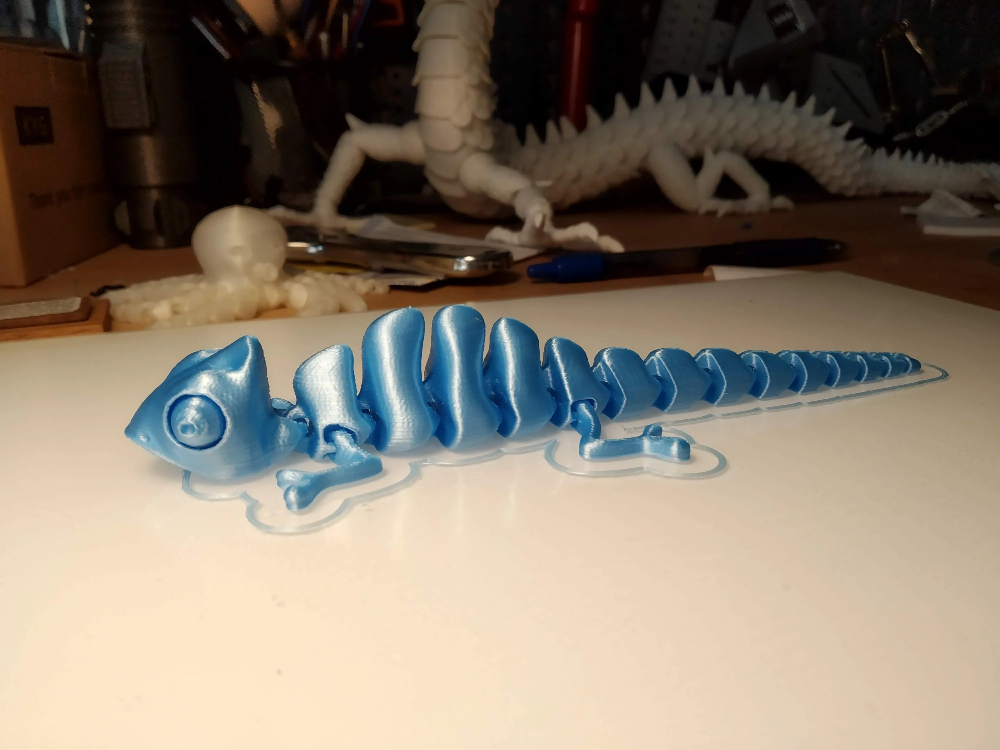 And teams and companies in China and the Netherlands have 3D printed demonstration houses.
And teams and companies in China and the Netherlands have 3D printed demonstration houses.
Those structures aren’t constructed in one print job, however: separate segments are printed and then connected. By producing bridges and houses more cheaply and efficiently, 3D printing could reduce concrete’s carbon footprint — but it could also just encourage engineers to build more.
It’s not just concrete that is going big: Amsterdam firm MX3D has printed a bridge from stainless steel. First displayed publicly in 2018, the bridge is now being tested and having sensors installed ahead of a planned installation over an Amsterdam canal.
A view of MX3D’s printer during the process of printing a metal bridge.Credit: Olivier de Gruijter/MX3D
And California start-up firm Relativity Space in Los Angeles says it is constructing a nearly fully 3D-printed rocket. The rocket is designed to lift 1,250 kilograms into low Earth orbit, and its first test launch is slated for 2021. Printed metal doesn’t always have the same heat-dissipating performance as non-printed metal, says Relativity Space’s chief executive, Tim Ellis, but the printing process can add cooling channels in geometries that can’t usually be manufactured.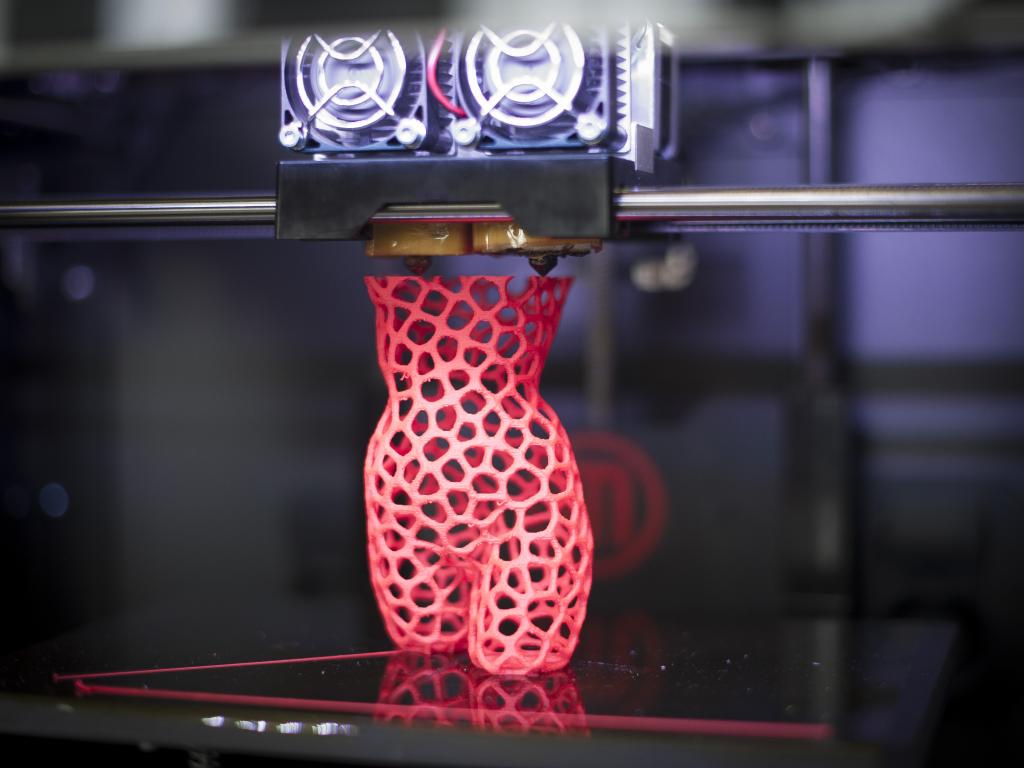 Because rockets are used only once or perhaps a few times, they don’t have to be as strong in the long term as do alloys in aeroplane parts, which must resist failure over tens of thousands of pressure cycles, Ellis says.
Because rockets are used only once or perhaps a few times, they don’t have to be as strong in the long term as do alloys in aeroplane parts, which must resist failure over tens of thousands of pressure cycles, Ellis says.
A metal printer at start-up firm Relativity Space, which aims to test a mostly 3D-printed rocket in 2021.Credit: Relativity Space
These large-scale metal-printed projects are built with robot arms that feed a thin metal wire to a laser that welds the material into place. Other established ways to print metal use a laser or a beam of electrons to melt or fuse a bed of powder into layers of finished product. Another technique binds a bed of powder with liquid glue, then sinters the structure in a furnace. And printers designed in the past few years extrude molten metals through nozzles, in much the same way as in FDM.
Aviation firms such as Boeing, Rolls Royce and Pratt & Whitney are using 3D printing to make metal parts, mainly for jet engines.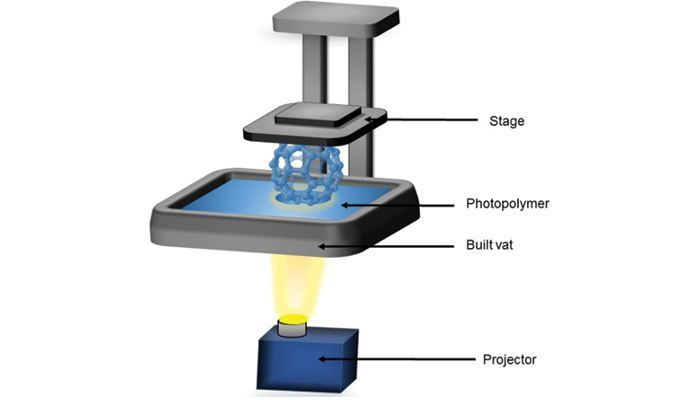 It can be cheaper than milling metal blocks, and the intricate components often weigh less than their conventionally made counterparts.
It can be cheaper than milling metal blocks, and the intricate components often weigh less than their conventionally made counterparts.
But 3D-printed metals are prone to defects that can weaken the final products. Spadaccini and others are trying to use arrays of sensors and high-speed cameras to watch for irregularities such as hotspots of heat or strain — and then make adjustments in real time, he says.
Five innovative ways to use 3D printing in the laboratory
Many scientists are also hoping to improve the intrinsic strength of printed metals, sometimes by controlling the microstructures of the materials. For instance, in October 2017, a US team reported that the intense heat and rapid cooling used in 3D-printing stainless steel could alter the metal’s microstructure such that the product is stronger than those cast conventionally7. And two months ago, researchers in Australia and the United States reported a titanium–copper alloy with similar strength advantages8.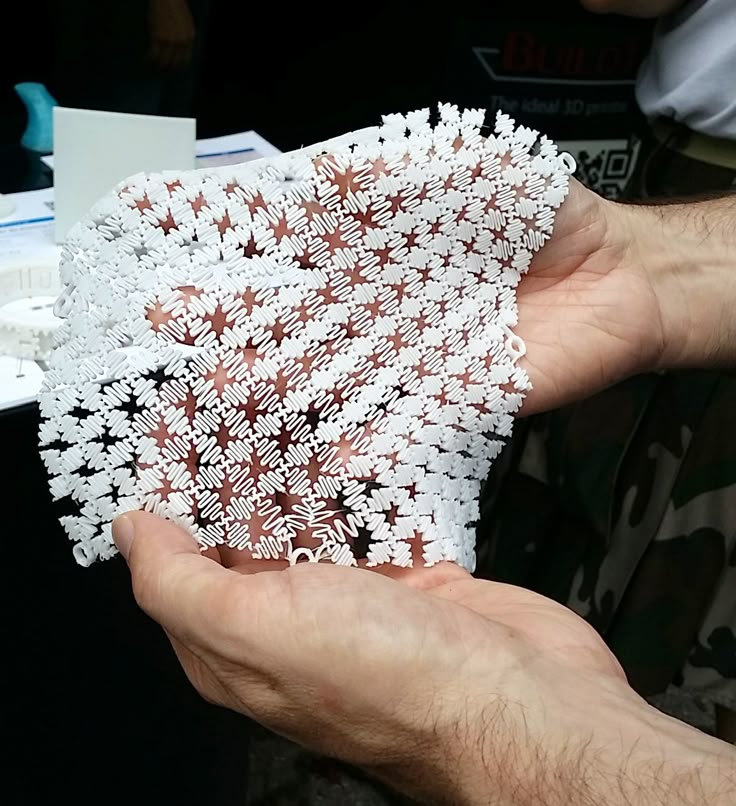 As they solidified, previous 3D-printed titanium alloys tended to form grains that grew in column-like structures. The copper helps to speed up the solidification process, which results in grains that are smaller and sprout in all directions, strengthening the overall structure.
As they solidified, previous 3D-printed titanium alloys tended to form grains that grew in column-like structures. The copper helps to speed up the solidification process, which results in grains that are smaller and sprout in all directions, strengthening the overall structure.
Mark Easton, a materials engineer at RMIT University in Melbourne and one of the leaders of the alloy work, has already had conversations with aerospace companies interested in exploring uses for the material. He says it could also be used in medical implants such as joint replacements.
Many of the printing techniques that work for metals can also be applied to ceramics, with potential applications that include making dental crowns or orthopaedic implants. Moulds for these objects are already made by 3D printing, with the material cast in the conventional way. But 3D-printing the entire object could save time at the dentist or surgeon’s office.
However, it is harder to control the microstructure of 3D-printed ceramics, says Eduardo Saiz, a materials scientist and ceramicist at Imperial College London.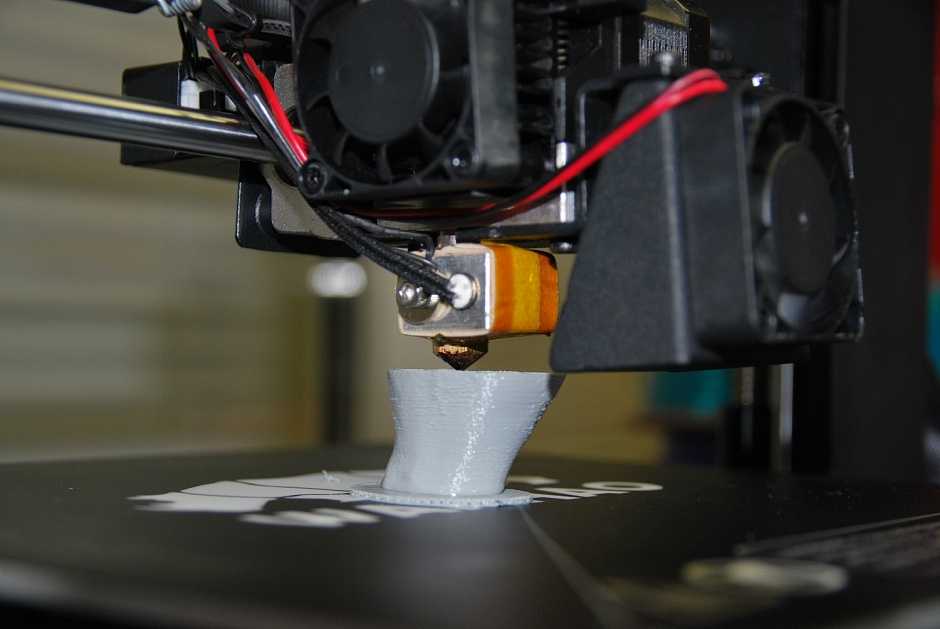 And nearly all practical ceramic printing techniques involve extensive post-print sintering that can warp or deform the part. “In my opinion, ceramics is way behind polymers and metals in terms of practical applications,” he says.
And nearly all practical ceramic printing techniques involve extensive post-print sintering that can warp or deform the part. “In my opinion, ceramics is way behind polymers and metals in terms of practical applications,” he says.
The field’s future could also lie in ‘4D printing’ — 3D-printed objects that also have the ability to perform some mechanical action, akin to artificial muscles. Often, these incorporate shape-memory polymers, materials that can react to changes in their environment such as heat or moisture.
In May 2018, researchers at the Swiss Federal Institute of Technology (ETH) in Zurich and the California Institute of Technology in Pasadena reported printing a submarine that propels itself forward using paddles that snap backwards when placed in warm water9. The work could lead to microrobots that can explore the oceans autonomously. But for the moment, the paddles must be reset after each stroke. Such devices could use battery power to reset themselves, but that makes the machine less efficient than one made conventionally, says Geoff Spinks, a materials engineer at the University of Wollongong in Australia.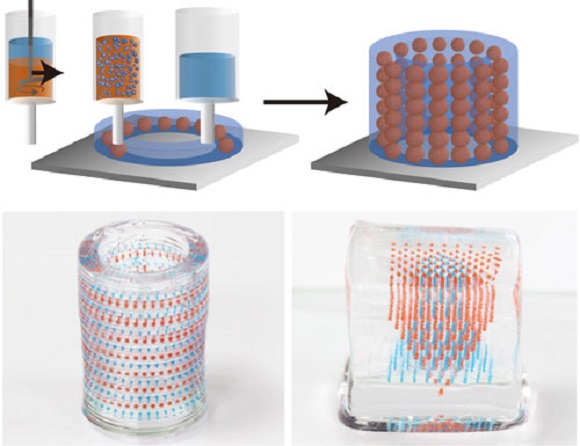 “There are still some big challenges with 4D printing,” he says.
“There are still some big challenges with 4D printing,” he says.
Another approach to 4D-printed devices involves triggering the action with a changing external magnetic field. US researchers have 3D-printed lattice structures filled with a liquid that changes stiffness in response to a magnetic field10 — which could perhaps be used to help car seats stiffen on impact.
A fluid that stiffens in response to a magnetic field is injected into the hollow struts and beams of a 3D-printed lattice. The material can be made stiff or flexible.Credit: Julie Mancini/LLNL
Other, more passive potential 4D printing applications include stents, which could be compressed to be implanted then expanded on reaching the desired site in a blood vessel to prop it open. Last July, researchers in Switzerland and Italy described a 4D-printed stent that is just 50 micrometres wide11, much smaller than conventional ones. The devices are so small, the team says, they could one day be used to treat complications in fetuses, such as strictures in the urinary tract, which can sometimes be fatal.
Perhaps the most ambitious example of 4D printing is matter that not only moves, but is alive. Currently, techniques for such bioprinting can print tissue, such as human skin, that is suitable for lab research, as well as patches of tissue for livers and other organs that have been successfully implanted in rats. But such techniques are still far from ready to integrate into a human body. Researchers dream of printing fully functioning organs that could alleviate long wait lists for organ donors. “I personally feel we’re a decade-plus away from that, at least, if ever,” says Lewis.
All together nowMany inventive ideas about printing matter that moves or changes rely on printing multiple materials together. “That’s absolutely where the field is heading,” says Scott.
Last November, Lewis and her lab described a printer that can rapidly switch between different polymer inks or mix them as it prints a single object12.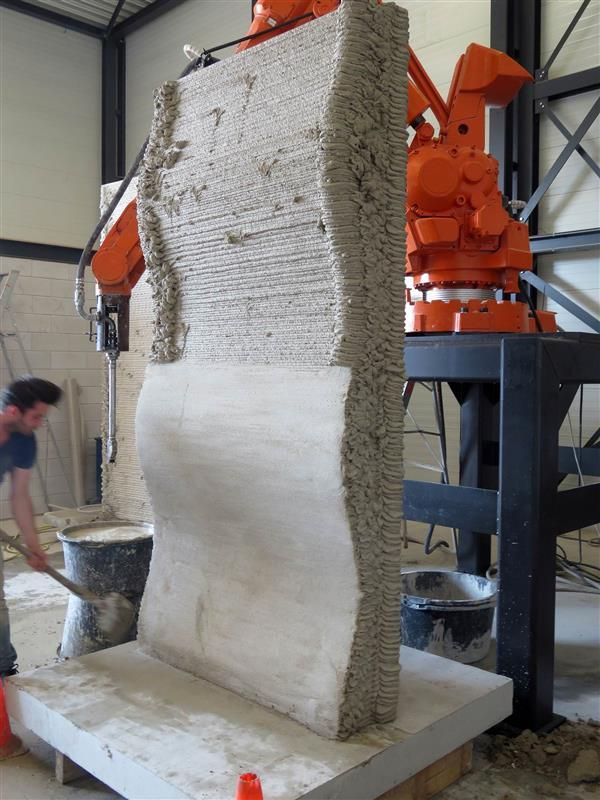 This means objects can be printed with both flexible and rigid parts. Lewis has spun off previous work on multi-material printers into a firm called Voxel8, a start-up in Somerville, Massachusetts. Her multi-material printer could help with the athletics wear that Voxel8 is developing, says Lewis. Wearable devices need to be flexible around joints while also having rigid parts to house electronics. Saiz calls the printer “beautiful work”, adding wistfully: “There’s nothing like that for ceramics or metal.”
This means objects can be printed with both flexible and rigid parts. Lewis has spun off previous work on multi-material printers into a firm called Voxel8, a start-up in Somerville, Massachusetts. Her multi-material printer could help with the athletics wear that Voxel8 is developing, says Lewis. Wearable devices need to be flexible around joints while also having rigid parts to house electronics. Saiz calls the printer “beautiful work”, adding wistfully: “There’s nothing like that for ceramics or metal.”
And in March 2018, a team led by Jerry Qi, a materials engineer at Georgia Institute of Technology in Atlanta, unveiled a four-in-one printer. This combines a nozzle that extrudes molten polymer with one that prints light-sensitive resin, ready to be cured by ultraviolet lamps or lasers, and two that print wires and circuitry from tiny dots of metal13. The print heads work together to make integrated devices with circuits embedded on a rigid board or inside a flexible polymer enclosure.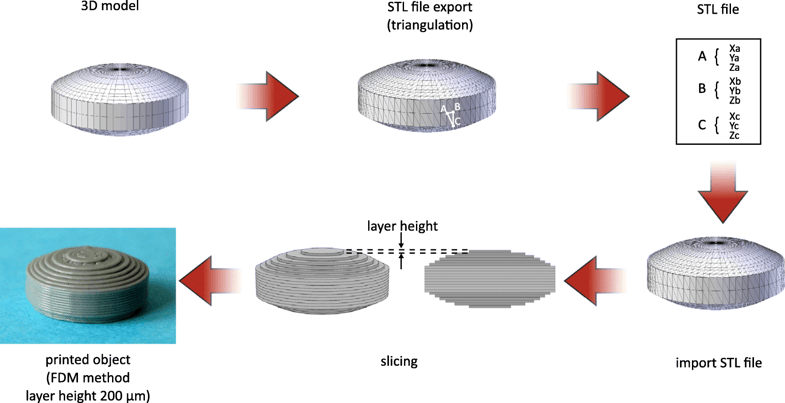 Qi says his group is now collaborating with electronics companies interested in printing circuit-board prototypes faster than conventional methods.
Qi says his group is now collaborating with electronics companies interested in printing circuit-board prototypes faster than conventional methods.
It wasn’t as simple as bolting four different printers into one platform: the researchers also needed to develop software that would allow each print head to communicate with the others and keep track of the progress.
The field is still far from delivering on early visions of bringing mass manufacturing into people’s homes. For now, sophisticated printers are too expensive to appeal to non-specialists. But 3D printing has come a long way in the past 20 years. Todd remembers people touring his lab in the early 2000s to see his technique to fuse specks of metal dust together to grow parts. Compared with the conventional milling machines and metal-cutting systems in neighbouring labs, his 3D-printing machines struck visitors as a complete oddity. “It was like we were some sort of a dog playing a piano in a bar,” he recalls. Now, for many firms, that trick is standard practice.
The 3-D Printing Revolution
Idea in Brief
The Breakthrough
Additive manufacturing, or 3-D printing, is poised to transform the industrial economy. Its extreme flexibility not only allows for easy customization of goods but also eliminates assembly and inventories and enables products to be redesigned for higher performance.
The Challenge
Management teams should be reconsidering their strategies along three dimensions: (1) How might our offerings be enhanced, either by us or by competitors? (2) How should we reconfigure our operations, given the myriad new options for fabricating products and parts? (3) How will our commercial ecosystem evolve?
The Big Play
Inevitably, powerful platforms will arise to establish standards and facilitate exchanges among the designers, makers, and movers of 3-D-printed goods. The most successful of these will prosper mightily.
Leer en español
Ler em português
Industrial 3-D printing is at a tipping point, about to go mainstream in a big way. Most executives and many engineers don’t realize it, but this technology has moved well beyond prototyping, rapid tooling, trinkets, and toys. “Additive manufacturing” is creating durable and safe products for sale to real customers in moderate to large quantities.
Most executives and many engineers don’t realize it, but this technology has moved well beyond prototyping, rapid tooling, trinkets, and toys. “Additive manufacturing” is creating durable and safe products for sale to real customers in moderate to large quantities.
The beginnings of the revolution show up in a 2014 PwC survey of more than 100 manufacturing companies. At the time of the survey, 11% had already switched to volume production of 3-D-printed parts or products. According to Gartner analysts, a technology is “mainstream” when it reaches an adoption level of 20%.
Among the numerous companies using 3-D printing to ramp up production are GE (jet engines, medical devices, and home appliance parts), Lockheed Martin and Boeing (aerospace and defense), Aurora Flight Sciences (unmanned aerial vehicles), Invisalign (dental devices), Google (consumer electronics), and the Dutch company LUXeXcel (lenses for light-emitting diodes, or LEDs). Watching these developments, McKinsey recently reported that 3-D printing is “ready to emerge from its niche status and become a viable alternative to conventional manufacturing processes in an increasing number of applications. ” In 2014 sales of industrial-grade 3-D printers in the United States were already one-third the volume of industrial automation and robotic sales. Some projections have that figure rising to 42% by 2020.
” In 2014 sales of industrial-grade 3-D printers in the United States were already one-third the volume of industrial automation and robotic sales. Some projections have that figure rising to 42% by 2020.
Further Reading
More companies will follow as the range of printable materials continues to expand. In addition to basic plastics and photosensitive resins, these already include ceramics, cement, glass, numerous metals and metal alloys, and new thermoplastic composites infused with carbon nanotubes and fibers. Superior economics will eventually convince the laggards. Although the direct costs of producing goods with these new methods and materials are often higher, the greater flexibility afforded by additive manufacturing means that total costs can be substantially lower.
With this revolutionary shift already under way, managers should now be engaging with strategic questions on three levels:
First, sellers of tangible products should ask how their offerings could be improved, whether by themselves or by competitors.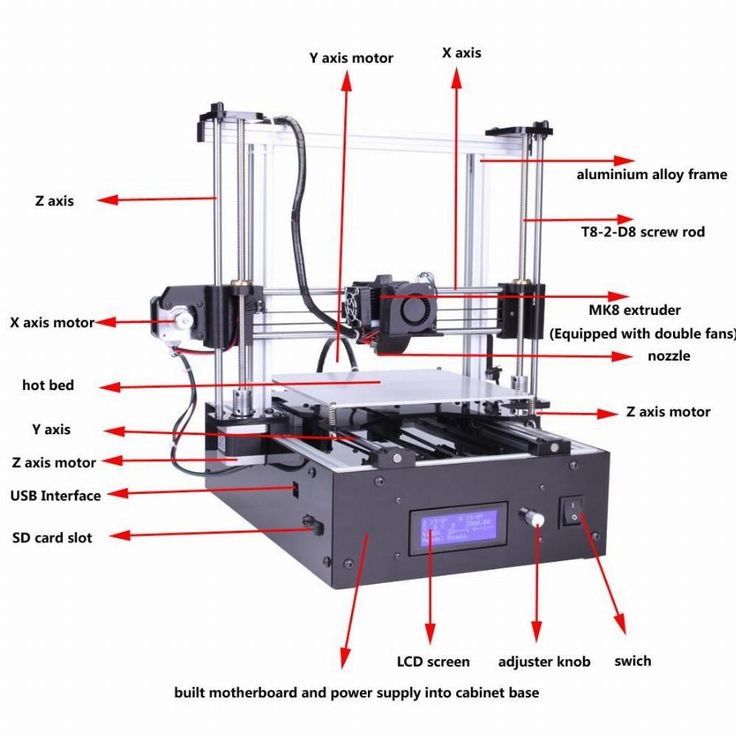 Fabricating an object layer by layer, according to a digital “blueprint” downloaded to a printer, allows not only for limitless customization but also for designs of greater intricacy.
Fabricating an object layer by layer, according to a digital “blueprint” downloaded to a printer, allows not only for limitless customization but also for designs of greater intricacy.
Second, industrial enterprises must revisit their operations. As additive manufacturing creates myriad new options for how, when, and where products and parts are fabricated, what network of supply chain assets and what mix of old and new processes will be optimal?
Third, leaders must consider the strategic implications as whole commercial ecosystems begin to form around the new realities of 3-D printing. Much has been made of the potential for large swaths of the manufacturing sector to atomize into an untold number of small “makers.” But that vision tends to obscure a surer and more important development: To permit the integration of activities across designers, makers, and movers of goods, digital platforms will have to be established. At first these platforms will enable design-to-print activities and design sharing and fast downloading. Soon they will orchestrate printer operations, quality control, real-time optimization of printer networks, and capacity exchanges, among other needed functions. The most successful platform providers will prosper mightily by establishing standards and providing the settings in which a complex ecosystem can coordinate responses to market demands. But every company will be affected by the rise of these platforms. There will be much jockeying among incumbents and upstarts to capture shares of the enormous value this new technology will create.
Soon they will orchestrate printer operations, quality control, real-time optimization of printer networks, and capacity exchanges, among other needed functions. The most successful platform providers will prosper mightily by establishing standards and providing the settings in which a complex ecosystem can coordinate responses to market demands. But every company will be affected by the rise of these platforms. There will be much jockeying among incumbents and upstarts to capture shares of the enormous value this new technology will create.
These questions add up to a substantial amount of strategic thinking, and still another remains: How fast will all this happen? For a given business, here’s how fast it can happen: The U.S. hearing aid industry converted to 100% additive manufacturing in less than 500 days, according to one industry CEO, and not one company that stuck to traditional manufacturing methods survived. Managers will need to determine whether it’s wise to wait for this fast-evolving technology to mature before making certain investments or whether the risk of waiting is too great. Their answers will differ, but for all of them it seems safe to say that the time for strategic thinking is now.
Their answers will differ, but for all of them it seems safe to say that the time for strategic thinking is now.
Additive’s Advantages
It may be hard to imagine that this technology will displace today’s standard ways of making things in large quantities. Traditional injection-molding presses, for example, can spit out thousands of widgets an hour. By contrast, people who have watched 3-D printers in action in the hobbyist market often find the layer-by-layer accretion of objects comically slow. But recent advances in the technology are changing that dramatically in industrial settings.
Some may forget why standard manufacturing occurs with such impressive speed. Those widgets pour out quickly because heavy investments have been made up front to establish the complex array of machine tools and equipment required to produce them. The first unit is extremely expensive to make, but as identical units follow, their marginal cost plummets.
Additive manufacturing doesn’t offer anything like that economy of scale.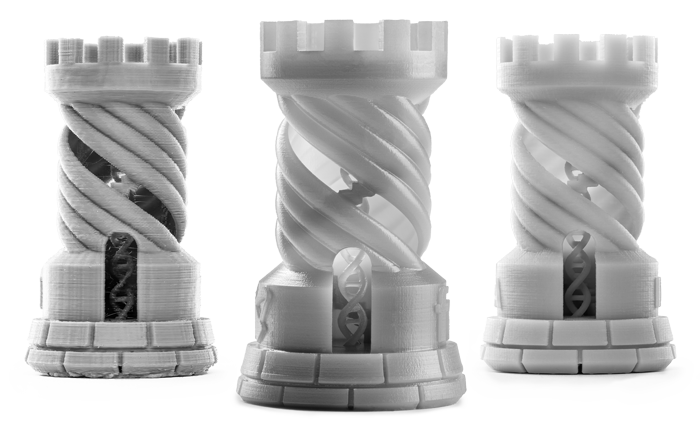 However, it avoids the downside of standard manufacturing—a lack of flexibility. Because each unit is built independently, it can easily be modified to suit unique needs or, more broadly, to accommodate improvements or changing fashion. And setting up the production system in the first place is much simpler, because it involves far fewer stages. That’s why 3-D printing has been so valuable for producing one-offs such as prototypes and rare replacement parts. But additive manufacturing increasingly makes sense even at higher scale. Buyers can choose from endless combinations of shapes, sizes, and colors, and this customization adds little to a manufacturer’s cost even as orders reach mass-production levels.
However, it avoids the downside of standard manufacturing—a lack of flexibility. Because each unit is built independently, it can easily be modified to suit unique needs or, more broadly, to accommodate improvements or changing fashion. And setting up the production system in the first place is much simpler, because it involves far fewer stages. That’s why 3-D printing has been so valuable for producing one-offs such as prototypes and rare replacement parts. But additive manufacturing increasingly makes sense even at higher scale. Buyers can choose from endless combinations of shapes, sizes, and colors, and this customization adds little to a manufacturer’s cost even as orders reach mass-production levels.
A big part of the additive advantage is that pieces that used to be molded separately and then assembled can now be produced as one piece in a single run. A simple example is sunglasses: The 3-D process allows the porosity and mixture of plastics to vary in different areas of the frame.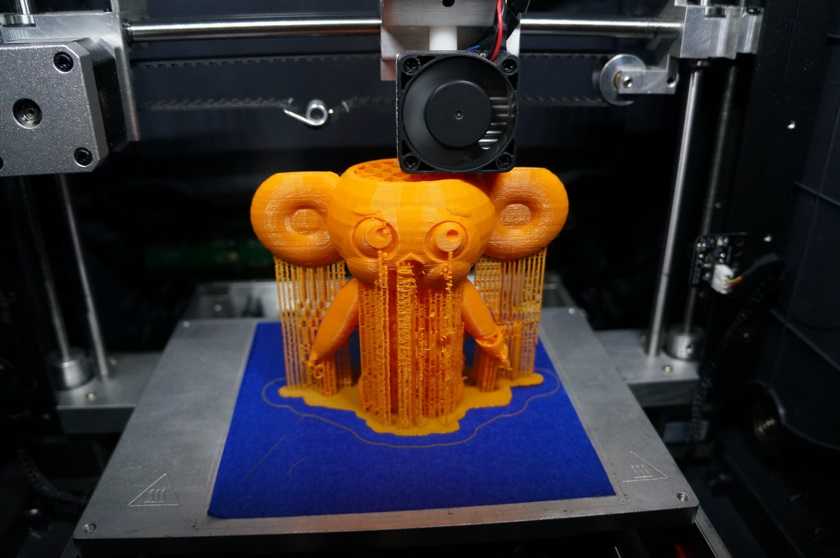 The earpieces come out soft and flexible, while the rims holding the lenses are hard. No assembly required.
The earpieces come out soft and flexible, while the rims holding the lenses are hard. No assembly required.
Printing parts and products also allows them to be designed with more-complex architectures, such as honeycombing within steel panels or geometries previously too fine to mill. Complex mechanical parts—an encased set of gears, for example—can be made without assembly. Additive methods can be used to combine parts and generate far more interior detailing. That’s why GE Aviation has switched to printing the fuel nozzles of certain jet engines. It expects to churn out more than 45,000 of the same design a year, so one might assume that conventional manufacturing methods would be more suitable. But printing technology allows a nozzle that used to be assembled from 20 separately cast parts to be fabricated in one piece. GE says this will cut the cost of manufacturing by 75%.
U.S. hearing aid companies converted to 100% 3-D printing in less than 500 days.
Additive manufacturing can also use multiple printer jets to lay down different materials simultaneously.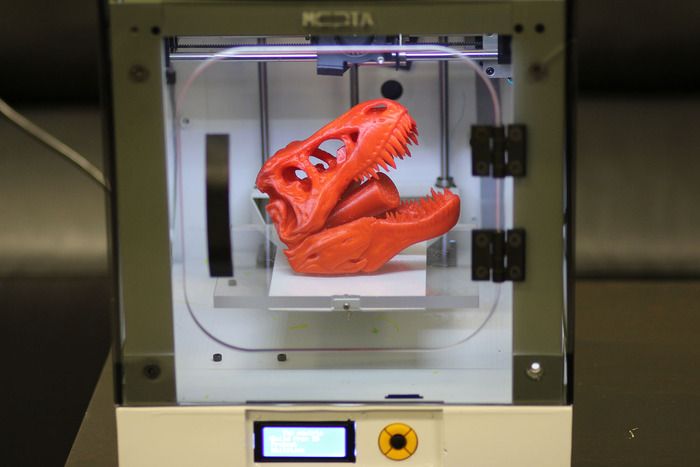 Thus Optomec and other companies are developing conductive materials and methods of printing microbatteries and electronic circuits directly into or onto the surfaces of consumer electronic devices. Additional applications include medical equipment, transportation assets, aerospace components, measurement devices, telecom infrastructure, and many other “smart” things.
Thus Optomec and other companies are developing conductive materials and methods of printing microbatteries and electronic circuits directly into or onto the surfaces of consumer electronic devices. Additional applications include medical equipment, transportation assets, aerospace components, measurement devices, telecom infrastructure, and many other “smart” things.
The enormous appeal of limiting assembly work is pushing additive manufacturing equipment to grow ever larger. At the current extreme, the U.S. Department of Defense, Lockheed Martin, Cincinnati Tool Steel, and Oak Ridge National Laboratory are partnering to develop a capability for printing most of the endo- and exoskeletons of jet fighters, including the body, wings, internal structural panels, embedded wiring and antennas, and soon the central load-bearing structure. So-called big area additive manufacturing makes such large-object fabrication possible by using a huge gantry with computerized controls to move the printers into position. When this process has been certified for use, the only assembly required will be the installation of plug-and-play electronics modules for navigation, communications, weaponry, and electronic countermeasure systems in bays created during the printing process. In Iraq and Afghanistan the U.S. military has been using drones from Aurora Flight Sciences, which prints the entire body of these unmanned aerial vehicles—some with wingspans of 132 feet—in one build.
When this process has been certified for use, the only assembly required will be the installation of plug-and-play electronics modules for navigation, communications, weaponry, and electronic countermeasure systems in bays created during the printing process. In Iraq and Afghanistan the U.S. military has been using drones from Aurora Flight Sciences, which prints the entire body of these unmanned aerial vehicles—some with wingspans of 132 feet—in one build.
Three-Dimensional Strategy
This brief discussion of additive manufacturing’s advantages suggests how readily companies will embrace the technology—and additional savings in inventory, shipping, and facility costs will make the case even stronger. The clear implication is that managers in companies of all kinds should be working to anticipate how their businesses will adapt on the three strategic levels mentioned above.
Offerings, redesigned.
Product strategy is the answer to that most basic question in business, What will we sell? Companies will need to imagine how their customers could be better served in an era of additive manufacturing.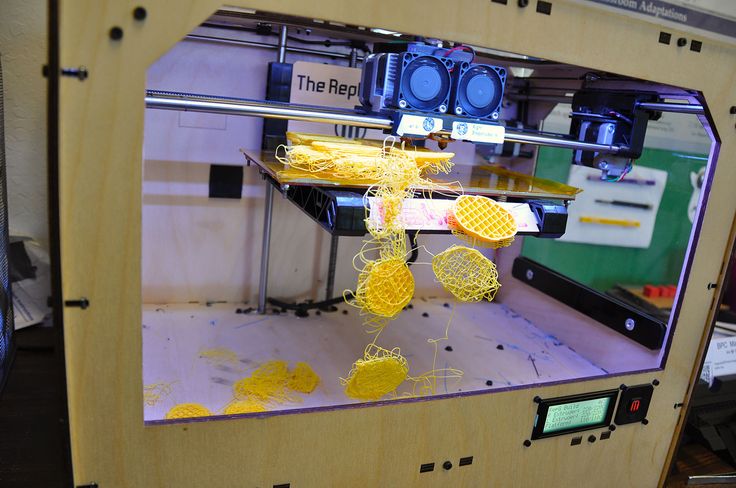 What designs and features will now be possible that were not before? What aspects can be improved because restrictions or delivery delays have been eliminated?
What designs and features will now be possible that were not before? What aspects can be improved because restrictions or delivery delays have been eliminated?
For example, in the aerospace and automotive industries, 3-D printing will most often be used in the pursuit of performance gains. Previously, the fuel efficiency of jet fighters and vehicles could be enhanced by reducing their weight, but this frequently made them less structurally sound. The new technology allows manufacturers to hollow out a part to make it lighter and more fuel-efficient and incorporate internal structures that provide greater tensile strength, durability, and resistance to impact. And new materials that have greater heat and chemical resistance can be used in various spots in a product, as needed.
Want to know how fast the 3-D future is coming? Don’t look only at adoption rates among manufacturers. Look at the innovation rates of inventors. In 2005 only 80 patents relating to additive manufacturing materials, software, and equipment were granted worldwide, not counting duplicates filed in multiple countries.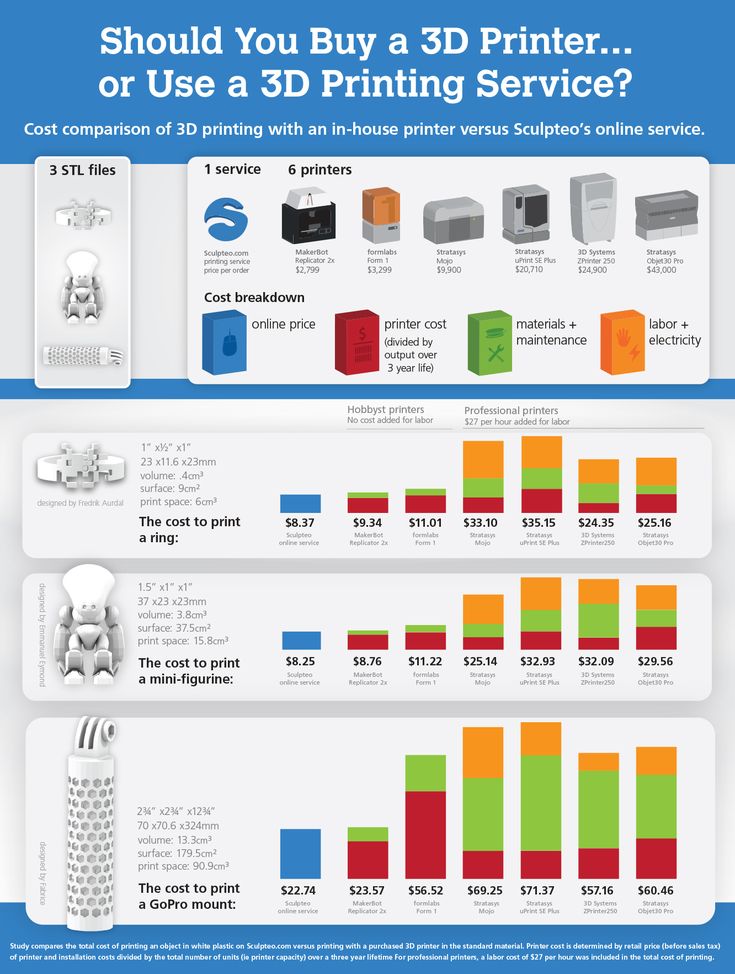 By 2013 that number had gone into orbit, with approximately 600 new nonduplicative patents issued around the globe.
By 2013 that number had gone into orbit, with approximately 600 new nonduplicative patents issued around the globe.
What are some of the companies behind these patents? Not surprisingly, the two leaders are Stratasys and 3D Systems, rivals that have staked out positions in additive manufacturing. They hold 57 and 49 nonduplicative patents respectively. As befits its printing heritage, Xerox, too, has invested heavily in additive technologies for making electronics and has developed a strong alliance with 3D Systems. Panasonic, Hewlett-Packard, 3M, and Siemens likewise hold numerous patents.
But surprisingly, the largest users of 3-D printing have also been active innovators. Fourth on the list, with 35 patents, is Therics, a manufacturer of medical devices. These commercial companies understand additive manufacturing’s potential to give them important advantages over competitors.
Also noteworthy among patent holders are companies that straddle both worlds. GE and IBM are important manufacturers but are increasingly invested in platforms that optimize value chains run by other companies. GE (11 patents) is developing the industrial internet, and IBM (19) has worked out what it is calling the “software-defined supply chain” and optimization software for smart manufacturing systems. Both are well positioned to take on similar roles with regard to additive manufacturing—and both bear watching as models for how incumbents can capture disproportionate value from a highly disruptive technology.
GE (11 patents) is developing the industrial internet, and IBM (19) has worked out what it is calling the “software-defined supply chain” and optimization software for smart manufacturing systems. Both are well positioned to take on similar roles with regard to additive manufacturing—and both bear watching as models for how incumbents can capture disproportionate value from a highly disruptive technology.
In other industries, the use of additive manufacturing for more-tailored and fast-evolving products will have ramifications for how offerings are marketed. What happens to the concept of product generations—let alone the hoopla around a launch—when things can be upgraded continually during successive printings rather than in the quantum leaps required by the higher tooling costs and setup times of conventional manufacturing? Imagine a near future in which cloud-based artificial intelligence augments additive manufacturing’s ability to change or add products instantly without retooling.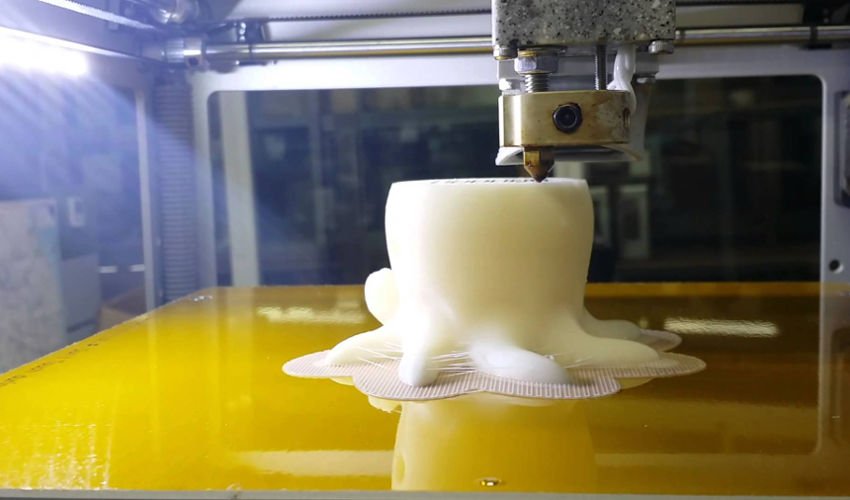 Real-time changes in product strategy, such as product mix and design decisions, would become possible. With such rapid adaptation, what new advantages should be core to brand promises? And how could marketing departments prevent brand drift without losing sales?
Real-time changes in product strategy, such as product mix and design decisions, would become possible. With such rapid adaptation, what new advantages should be core to brand promises? And how could marketing departments prevent brand drift without losing sales?
Operations, reoptimized.
Operations strategy encompasses all the questions of how a company will buy, make, move, and sell goods. The answers will be very different with additive manufacturing. Greater operational efficiency is always a goal, but it can be achieved in many ways. Today most companies contemplating the use of the technology do piecemeal financial analysis of targeted opportunities to swap in 3-D equipment and designs where those can reduce direct costs. Much bigger gains will come when they broaden their analyses to consider the total cost of manufacturing and overhead.
How much could be saved by cutting out assembly steps? Or by slashing inventories through production only in response to actual demand? Or by selling in different ways—for example, direct to consumers via interfaces that allow them to specify any configuration? In a hybrid world of old and new manufacturing methods, producers will have many more options; they will have to decide which components or products to transition over to additive manufacturing, and in what order.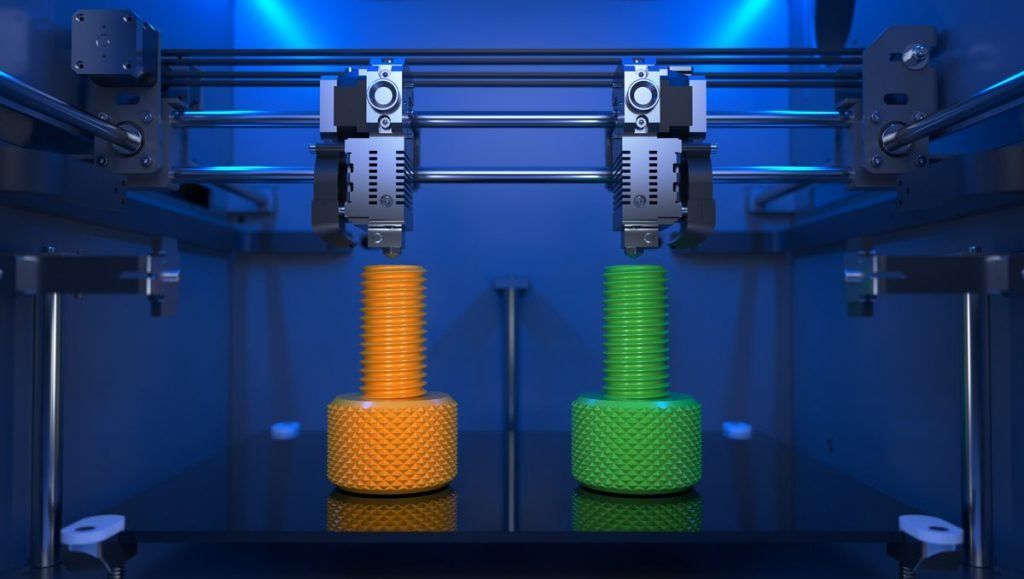
Additional questions will arise around facilities locations. How proximate should they be to which customers? How can highly customized orders be delivered as efficiently as they are produced? Should printing be centralized in plants or dispersed in a network of printers at distributors, at retailers, on trucks, or even in customers’ facilities? Perhaps all of the above. The answers will change in real time, adjusting to shifts in foreign exchange, labor costs, printer efficiency and capabilities, material costs, energy costs, and shipping costs.
This article also appears in:
A shorter traveling distance for products or parts not only saves money; it saves time. If you’ve ever been forced to leave your vehicle at a repair shop while the mechanic waits for a part, you’ll appreciate that. BMW and Honda, among other automakers, are moving toward the additive manufacturing of many industrial tools and end-use car parts in their factories and dealerships—especially as new metal, composite plastic, and carbon-fiber materials become available for use in 3-D printers.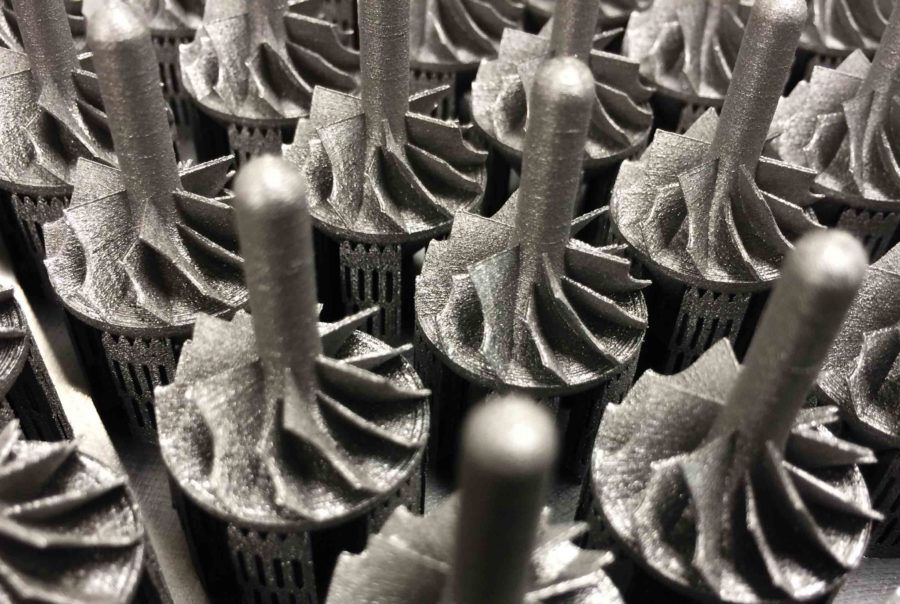 Distributors in many industries are taking note, eager to help their business customers capitalize on the new efficiencies. UPS, for example, is building on its existing third-party logistics business to turn its airport hub warehouses into mini-factories. The idea is to produce and deliver customized parts to customers as needed, instead of devoting acres of shelving to vast inventories. If we already live in a world of just-in-time inventory management, we now see how JIT things can get. Welcome to instantaneous inventory management.
Distributors in many industries are taking note, eager to help their business customers capitalize on the new efficiencies. UPS, for example, is building on its existing third-party logistics business to turn its airport hub warehouses into mini-factories. The idea is to produce and deliver customized parts to customers as needed, instead of devoting acres of shelving to vast inventories. If we already live in a world of just-in-time inventory management, we now see how JIT things can get. Welcome to instantaneous inventory management.
Indeed, given all the potential efficiencies of highly integrated additive manufacturing, business process management may become the most important capability around. Some companies that excel in this area will build out proprietary coordination systems to secure competitive advantage. Others will adopt and help to shape standard packages created by big software companies.
Ecosystems, reconfigured.
Finally comes the question of where and how the enterprise fits into its broader business environment. Here managers address the puzzles of Who are we? and What do we need to own to be who we are? As additive manufacturing allows companies to acquire printers that can make many products, and as idle capacity is traded with others in the business of offering different products, the answers to those questions will become far less clear. Suppose you have rows of printers in your facility that build auto parts one day, military equipment the next day, and toys the next. What industry are you part of? Traditional boundaries will blur. Yet managers need a strong sense of the company’s role in the world to make decisions about which assets they will invest in—or divest themselves of.
Here managers address the puzzles of Who are we? and What do we need to own to be who we are? As additive manufacturing allows companies to acquire printers that can make many products, and as idle capacity is traded with others in the business of offering different products, the answers to those questions will become far less clear. Suppose you have rows of printers in your facility that build auto parts one day, military equipment the next day, and toys the next. What industry are you part of? Traditional boundaries will blur. Yet managers need a strong sense of the company’s role in the world to make decisions about which assets they will invest in—or divest themselves of.
Aurora Flight Sciences can print the entire body of a drone in one build.
They may find their organizations evolving into something very different from what they have been. As companies are freed from many of the logistical requirements of standard manufacturing, they will have to look anew at the value of their capabilities and other assets and how those complement or compete with the capabilities of others.
The Platform Opportunity
One position in the ecosystem will prove to be the most central and powerful—and this fact is not lost on the management teams of the biggest players already in the business of additive manufacturing, such as eBay, IBM, Autodesk, PTC, Materialise, Stratasys, and 3D Systems. Many are vying to develop the platforms on which other companies will build and connect. They know that the role of platform provider is the biggest strategic objective they could pursue and that it’s still very much up for grabs.
Platforms are a prominent feature in highly digitized 21st-century markets, and additive manufacturing will be no exception. Here platform owners will be powerful because production itself is likely to matter less over time. Already some companies are setting up contract “printer farms” that will effectively commoditize the making of products on demand. Even the valuable designs for printable products, being purely digital and easily shared, will be hard to hold tight. (For that matter, 3-D scanning devices will make it possible to reverse-engineer products by capturing their geometric design information.)
(For that matter, 3-D scanning devices will make it possible to reverse-engineer products by capturing their geometric design information.)
Everyone in the system will have a stake in sustaining the platforms on which production is dynamically orchestrated, blueprints are stored and continually enhanced, raw materials supplies are monitored and purchased, and customer orders are received. Those that control the digital ecosystem will sit in the middle of a tremendous volume of industrial transactions, collecting and selling valuable information. They will engage in arbitrage and divide the work up among trusted parties or assign it in-house when appropriate. They will trade printer capacity and designs all around the world, influencing prices by controlling or redirecting the “deal flow” for both. Like commodities arbitrageurs, they will finance trades or buy low and sell high with the asymmetric information they gain from overseeing millions of transactions.
Any manufacturer whose strategy for the future includes additive techniques has to lay out a road map for getting there. Companies already on the journey are taking things step-by-step, but in three different ways.
Companies already on the journey are taking things step-by-step, but in three different ways.
Trickle Down
Some start with their high-end products, knowing that their most sophisticated (and price-insensitive) customers will appreciate the innovation and flexibility. The luxury will trickle down in the time-honored way as the technology matures and becomes more affordable. Automotive manufacturers, for example, tend to engineer one-off parts specially for Formula One racing cars and then find ways to introduce versions of those innovations to high-end sports and luxury cars. As engineers’ familiarity with the technology grows, they spot opportunities to bring it to parts for mass-market car segments.
Swap Out
Other pioneers proceed in a less splashy way, focusing first on the components of a given product that are easiest to migrate to additive manufacturing. The objective is to develop the organization’s know-how by advancing to more-challenging components of the same product.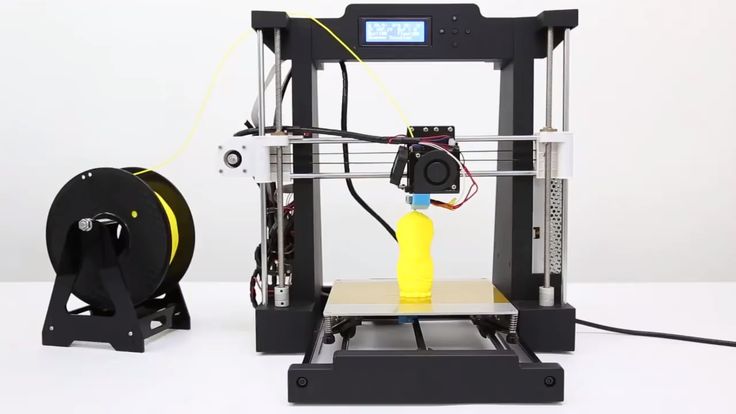 This is common in aerospace, where companies have selected a specific product, such as an F-35 fighter jet, and started with mundane brackets and braces before moving to, say, internal panels and partitions. As the manufacturers learn more, they begin printing the fighter’s exterior skin. Experiments with printing its load-bearing structures are now under way.
This is common in aerospace, where companies have selected a specific product, such as an F-35 fighter jet, and started with mundane brackets and braces before moving to, say, internal panels and partitions. As the manufacturers learn more, they begin printing the fighter’s exterior skin. Experiments with printing its load-bearing structures are now under way.
Cut Across
A third approach is to find components that show up in multiple products and use them to establish a 3-D foothold. For example, a design improvement for a fighter jet could be transferred to drones, missiles, or satellites. Such cross-product improvement builds knowledge and awareness throughout the company of how additive manufacturing can enhance performance on key dimensions such as weight, energy use, and flexibility.
The common theme here is small, incremental steps. In all three approaches, engineers are being given fascinating new puzzles to solve without having their world upended by still-evolving methods and materials, thus minimizing risk and resistance to change.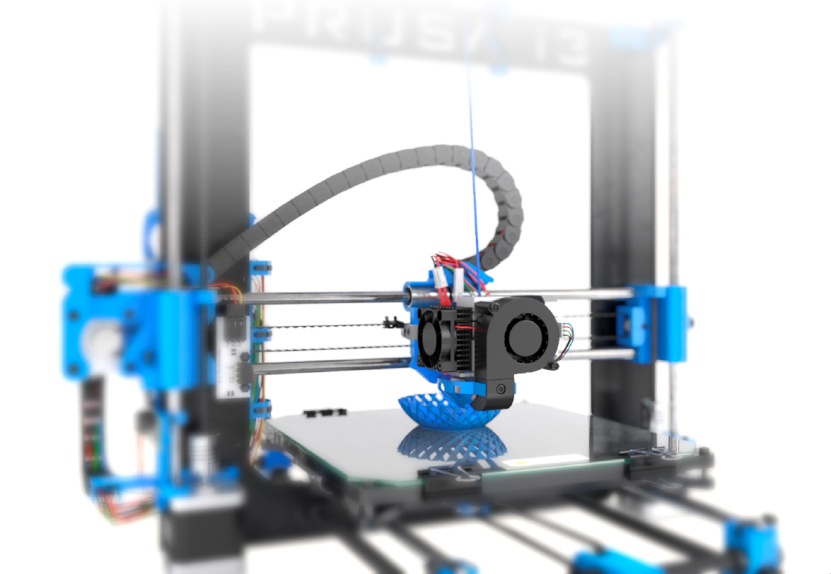 It is up to more-senior managers to maintain the appropriate level of pressure for taking each successive step. As they push for further adoption, they should allow naysayers to explain why 3-D printing isn’t right for a given part or process, but then challenge them to overcome that roadblock. Traditionalists will always be quick to tell you what 3-D printing can’t do. Don’t let them blind you to what it can.
It is up to more-senior managers to maintain the appropriate level of pressure for taking each successive step. As they push for further adoption, they should allow naysayers to explain why 3-D printing isn’t right for a given part or process, but then challenge them to overcome that roadblock. Traditionalists will always be quick to tell you what 3-D printing can’t do. Don’t let them blind you to what it can.
Responsibility for aligning dispersed capacity with growing market demand will fall to a small number of companies—and if the whole system is to work efficiently, some will have to step up to it. Look for analogs to Google, eBay, Match.com, and Amazon to emerge as search engines, exchange platforms, branded marketplaces, and matchmakers among additive manufacturing printers, designers, and design repositories. Perhaps even automated trading will come into existence, along with markets for trading derivatives or futures on printer capacity and designs.
In essence, then, the owners of printer-based manufacturing assets will compete with the owners of information for the profits generated by the ecosystem. And in fairly short order, power will migrate from producers to large systems integrators, which will set up branded platforms with common standards to coordinate and support the system. They’ll foster innovation through open sourcing and acquiring or partnering with smaller companies that meet high standards of quality. Small companies may indeed continue to try out interesting new approaches on the margins—but we’ll need big organizations to oversee the experiments and then push them to be practical and scalable.
And in fairly short order, power will migrate from producers to large systems integrators, which will set up branded platforms with common standards to coordinate and support the system. They’ll foster innovation through open sourcing and acquiring or partnering with smaller companies that meet high standards of quality. Small companies may indeed continue to try out interesting new approaches on the margins—but we’ll need big organizations to oversee the experiments and then push them to be practical and scalable.
Digital History Replicated
Thinking about the unfolding revolution in additive manufacturing, it’s hard not to reflect on that great transformative technology, the internet. In terms of the latter’s history, it might be fair to say that additive manufacturing is only in 1995. Hype levels were high that year, yet no one imagined how commerce and life would change in the coming decade, with the arrival of Wi-Fi, smartphones, and cloud computing. Few foresaw the day that internet-based artificial intelligence and software systems could run factories—and even city infrastructures—better than people could.
The future of additive manufacturing will bring similar surprises that might look strictly logical in hindsight but are hard to picture today. Imagine how new, highly capable printers might replace highly skilled workers, shifting entire companies and even manufacturing-based countries into people-less production. In “machine organizations,” humans might work only to service the printers.
And that future will arrive quickly. Once companies put a toe in the water and experience the advantages of greater manufacturing flexibility, they tend to dive in deep. As materials science creates more printable substances, more manufacturers and products will follow. Local Motors recently demonstrated that it can print a good-looking roadster, including wheels, chassis, body, roof, interior seats, and dashboard but not yet drivetrain, from bottom to top in 48 hours. When it goes into production, the roadster, including drivetrain, will be priced at approximately $20,000. As the cost of 3-D equipment and materials falls, traditional methods’ remaining advantages in economies of scale are becoming a minor factor.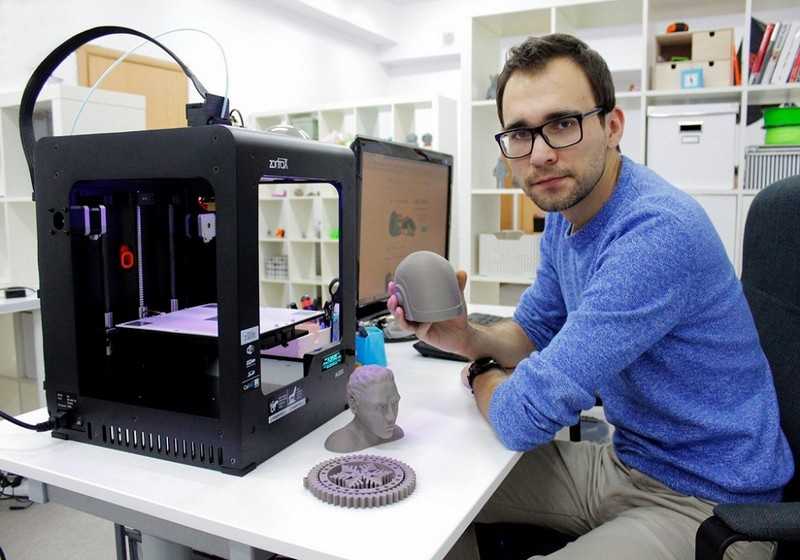
Local Motors can print a good-looking roadster from bottom to top in 48 hours.
Here’s what we can confidently expect: Within the next five years we will have fully automated, high-speed, large-quantity additive manufacturing systems that are economical even for standardized parts. Owing to the flexibility of those systems, customization or fragmentation in many product categories will then take off, further reducing conventional mass production’s market share.
Smart business leaders aren’t waiting for all the details and eventualities to reveal themselves. They can see clearly enough that additive manufacturing developments will change the way products are designed, made, bought, and delivered. They are taking the first steps in the redesign of manufacturing systems. They are envisioning the claims they will stake in the emerging ecosystem. They are making the many layers of decisions that will add up to advantage in a new world of 3-D printing.
A version of this article appeared in the May 2015 issue (pp.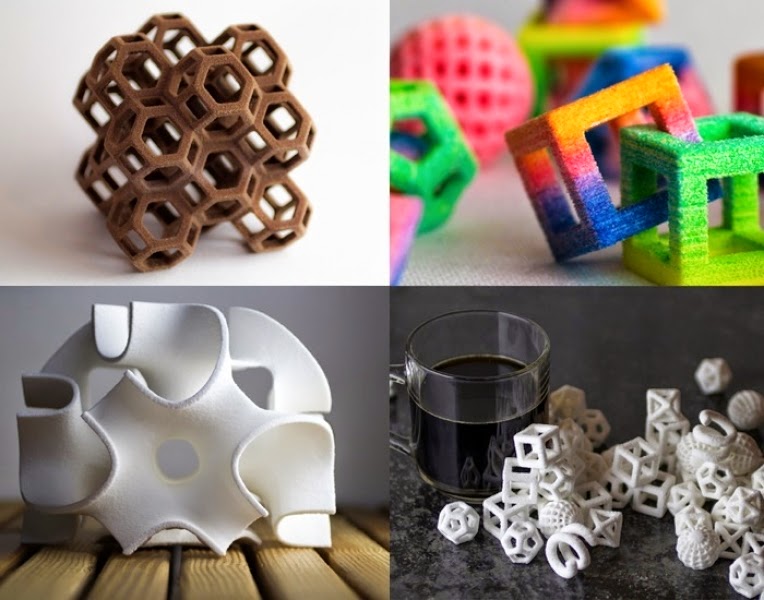 40–48) of Harvard Business Review.
40–48) of Harvard Business Review.
Most popular articles 3DToday - community of 3D printer owners 3DToday
MrPaulM
Loading
22.12.2022
2484
Creativity
70
Subscribe to the author
Subscribe
Don't want
Hello everyone!
Today I want to talk about my new project. While browsing YouTube for inspiration, I found a great project on the Machinators channel. They built a real off-road Lamborghini Aventador (lambotruck). And I just got excited about this project, and decided to model and print a similar model on radio control in 1:10 scale as soon as possible. nine0003
>> You can get acquainted with my other projects in the VK group: https://vk.com/mrpaulm...
Read more
Technical
thirty
Subscribe to the author
Subscribe
Don't want
Greetings to all!
My work activity is developing too rapidly, and I do not have time to write at all, but I really want to tell at least something.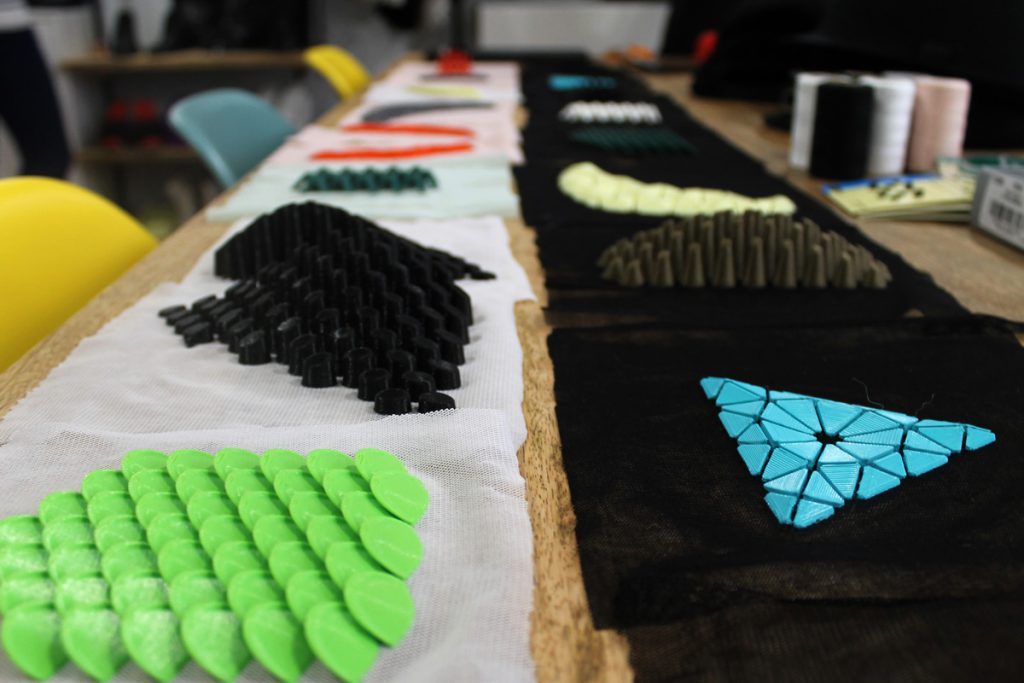
Today I will tell, enough, an interesting story. nine0003
My colleagues at Hardlight and I decided to start repairing 3D printers. But not only their own, but in general all.
Usually, with the accuracy of LCD / SLA printer screens, I'm poking around under the Pixel tolerance sign. But now, because of my situation, which he told...
Read more
Application
eleven
Subscribe to the author
Subscribe
Don't want
In this article I will talk about my experience of using 3D printing in the repair of ski equipment, which is necessary for this, and the results of my work. In connection with all the restrictions imposed due to the sanctions, transport and logistics schemes and trade between the countries were disrupted. Therefore, some products became impossible to buy, while delivery times for others greatly increased.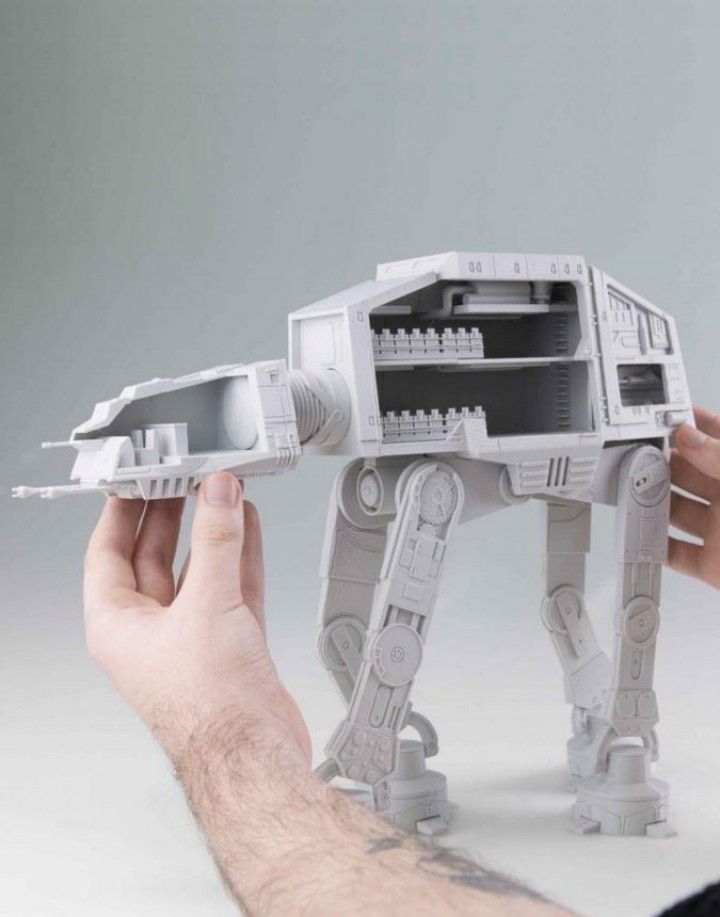 Winter came very quickly, and in order to arrive in time for the ski equipment rental season, my friends asked me to provide...
Winter came very quickly, and in order to arrive in time for the ski equipment rental season, my friends asked me to provide...
Read more
Creativity
nineteen
Subscribe to the author
Subscribe
Don't want
Colleagues, good day!
A friend asked me to make a souvenir for a hunter friend. He said that a friend simply does not have a soul in his hunting dog of the Drathaar breed. Naturally, it was not possible to find a 3D model of such a dog on the Internet. And I had to figure out how to satisfy the request. nine0003
And that's what happened....
First, I looked at what this creature looks like in general. I found a vector drawing, downloaded it, and started processing...
Read more
xolodny
Loading
12/16/2022
3214
Business
40
Subscribe to the author
Subscribe
Don't want
Inspired here by a publication about "import substitution" in pursuit of a box of consumables from hobby colleagues that save valiant dzhYpovodov from losing caps))), and for just a handful of bulbs. nine0003
nine0003
In the spring, "my" mechanics turned to me, and they service all my self-running carts - save me, they say, help me. We know that you have a shaitan-machine, which is called a "three-dy-printer". Bidi-bida-grief happened! Exclusive, they say, the Korean "zhip" was damaged in a collision, so much so that ...
Read more
Mix_vrn
Loading
12/16/2022
2736
RepRap
33 nine0003
Subscribe to the author
Subscribe
Don't want
Good day to all!
Do not judge strictly. This is my first note and the first product of this kind.
It all started this spring. There was an acute desire to do something interesting and necessary. And at the same time CNC. Well, it was really interesting to try it, everything was itchy. And the choice initially fell on a portal milling cutter. Despite the fact that there was a chance to somehow monetize this product. And even drew a machine tool in the Compass. Counted everything. And wept. I didn't want to make a toy...
And the choice initially fell on a portal milling cutter. Despite the fact that there was a chance to somehow monetize this product. And even drew a machine tool in the Compass. Counted everything. And wept. I didn't want to make a toy...
Read more
Miscellaneous
13
Subscribe to the author
Subscribe
Don't want
There is one extremely useful tool in my household - a 3D printer. For me, as a hobbyist to make something, from time to time he provides invaluable services in prototyping and creating various parts (bushings, holders, cases for equipment, etc., etc.).
But there is one problem: the printer is quite voluminous (40x60x60 cm), plus consumables and a repair kit - all this takes up a lot of space and turns any room into a kind of production workshop. If you have, for example...
Read more
3DMPD
Loading
12/15/2022
1676
Creativity
22
Subscribe to the author
Subscribe
Don't want
After a year of viewing posts and discussing printers and models from the 3DTodey website, my colleague and I decided to share our successes, and at the same time participate in the Filamentarno Box! 2022”, moreover, new orders are already waiting, and plastic on the coils is getting smaller every day. And I will immediately answer two main questions:
And I will immediately answer two main questions:
1. What do you print on? We print on Bizon 2 and Ulti Steel 2;
2. What do you print with? In the first place are composite glass-filled ABS plastics...
Read more
Lamme
Loading
12/14/2022
1418
Miscellaneous
eighteen
Subscribe to the author
Subscribe
Don't want
Having bought a photopolymer printer, I thought about a camera for the final curing of products. There are several ideas on the Internet about this: ready-made branded cameras, homemade cameras, manicure curing lamps, table lamps with UV lamps, hand torches with UV lamps, and even just putting the printed product in the sun. For various reasons, I did not like most of the methods, and I decided to make the camera myself. nine0003
nine0003
I must say right away that the idea is not...
Read more
Technical
16
Subscribe to the author
Subscribe
Don't want
My saga with the cheapest 3D printer part started a few months ago and finally ended successfully. And it started with the fact that when printing on the Magnum (Magnum Creative Uni 2), I began to notice pellets on the walls of the parts. Here on the forum they hinted at overheating of the plastic. I took note and decided to figure out how many Celsius I really have on the hot end with 240 parrots on the display. A traditional NTC 39 droplet thermistor sat in a luminous cube50 100k. And the firmware was under it. Case...
Read more
3D printing
23
Subscribe to the author
Subscribe
Don't want
The use of 3D printers in construction is becoming commonplace.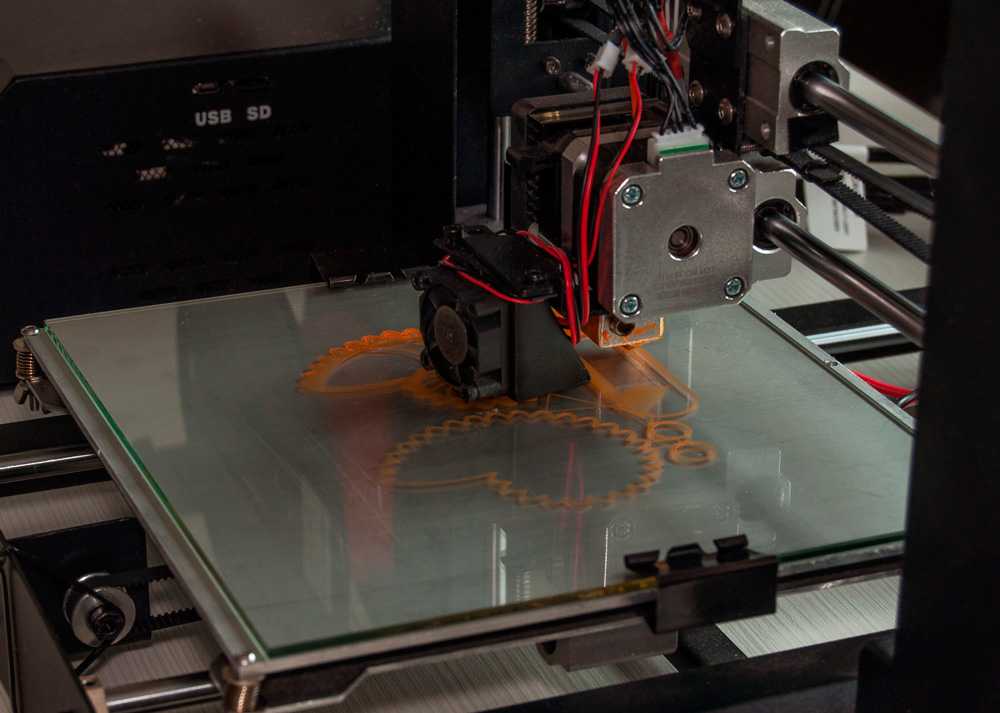 This year was no exception, on the contrary, it was this year that additive technology took another step in its development - not only individual houses are printed on the foundation, but also entire sites are built up. nine0003
This year was no exception, on the contrary, it was this year that additive technology took another step in its development - not only individual houses are printed on the foundation, but also entire sites are built up. nine0003
What has long been expected has happened - mass construction using 3D printing.
The whole history of practical construction 3D printing, as well as the evolution of equipment, began 8 years ago. Simultaneously...
Read more
DrProg
Loading
12/10/2022
5197
Technical
29
Follow the author
Follow
I don't want to
I'll start by saying that I myself don't make printed circuit boards on principle. It's not just crooked hands (although in them too), I just don't think it's my business, I don't want to mess with LUT, poison myself and circuits with chemicals, break my eyes by drilling 200 holes manually and so on, in order to end up with a terrible one anyway.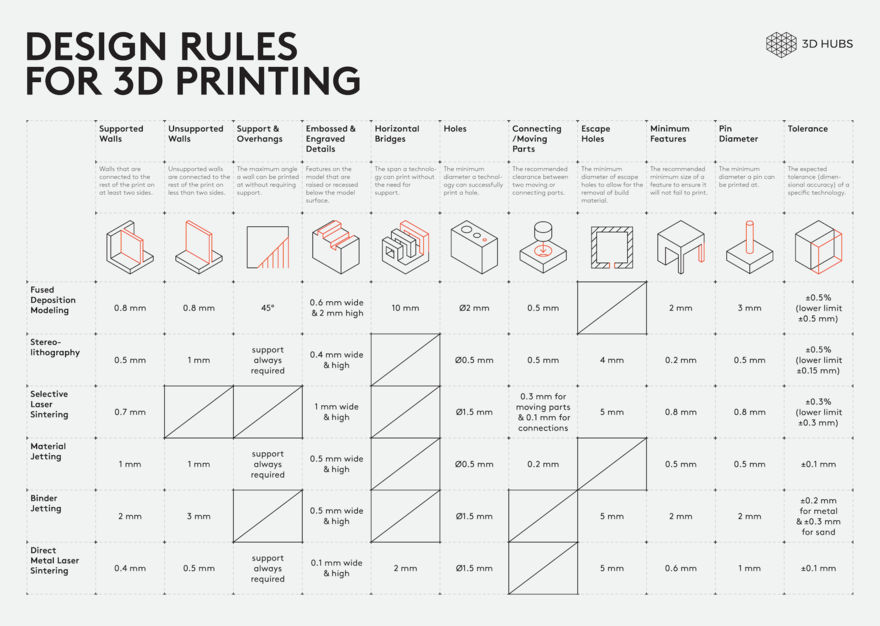 under the tree. I usually leave this job to professionals.
under the tree. I usually leave this job to professionals.
Until recently, I ordered boards from a local specialist who does quite well for a do-it-yourselfer...
Read more
Consumables
38
Subscribe to the author
Subscribe
Don't want
At the 3Dtoday Fest "Volgobots" talked about the magic filament, which is cooler and more convenient than your polyamides. And you don't have to dry it. Brews "Nit" and calls it "NIT-ING". Of course, it is impossible to print on ordinary printers, because an active thermal camera and a table 150+ are required. Became interesting. nine0003
Read more
Picavit
Loading
07.12.2022
2819
Application
eleven
Subscribe to the author
Subscribe
Don't want
Hello everyone! So the next version of the machine arrived in time on a different engine and control board). In fact, both versions were assembled almost simultaneously, but I decided to first review the Mini Disc Sander type 2804. This version is assembled on more powerful ones: a 3508 brushless motor and a control board. nine0003
In fact, both versions were assembled almost simultaneously, but I decided to first review the Mini Disc Sander type 2804. This version is assembled on more powerful ones: a 3508 brushless motor and a control board. nine0003
Read more
kzs64
Loading
07.12.2022
2644
3D modeling
17
Subscribe to the author
Subscribe
Don't want
In one of the novelties of the KOMPAS-3D v21 version, it became possible to save settings when exporting to STL.
Previously, you always had to change the settings every time you save.
Now that you have set the desired parameters, you can save your configuration to a separate file.
If other parameters are set, the set ones will be applied.
The configuration will be applied every time you save to STL format, without calling param...
Read more
- 1
- 2 nine0331 ... nine0331 561
What is a 3D printer?
3D printer - technology of the future
References:
Mikhailova, A. E. 3D printer is the technology of the future / A. E. Mikhailova, A. D. Doshina. - Text: direct // Young scientist. - 2015. - No. 20 (100). - S. 40-44. — URL: https://moluch.ru/archive/100/22467/ (date of access: 12/25/2022). nine0347
E. 3D printer is the technology of the future / A. E. Mikhailova, A. D. Doshina. - Text: direct // Young scientist. - 2015. - No. 20 (100). - S. 40-44. — URL: https://moluch.ru/archive/100/22467/ (date of access: 12/25/2022). nine0347
This article will focus on new technology for creating objects and objects - 3 D printer. The history of occurrence is described, the basic principles and technology of the device operation are indicated. Research is underway to apply 3 D printer in Rostov-on-Don, and highlights the problems and prospects for using this technology in different areas of life.
Keywords: 3 D printer, 3 D printing, stereolithography, SLA technology, SLS technology, DLP technology, EBM technology.
3D entered our everyday life at the beginning of the new millennium. Naturally, we associate this definition with film art or animation. But this technology covers much more spectrums of our life. So, what is a 3D printer, and what is printing on such a device? nine0003
A 3D printer is a device that creates an image in three dimensions. But first, let's take a look at the history.
Origin of
3D printing technology has been around since 1984. CharlesHull has developed 3D printing technology to create objects using digital data. In 1986, this technique was patented and given the name stereolithography.
The same company, CharlesHull, developed the first industrial 3D printer. And at 19In 1988, 3DSystem developed a 3D printer for printing at home - SLA-250.
Solidscape was founded in 1993. It starts mass production of inkjet-based 3D printers at low cost.
And finally, in 2005, the first color 3D printer appears - the Spectrum Z510. The credit for this advancement in the development of 3D printers belongs to ZCorporation (ZCorp).
The credit for this advancement in the development of 3D printers belongs to ZCorporation (ZCorp).
nine0423 Principle of operation 3 D printing
The principle of forming a figure from three-dimensional printing is called additive (from the word Add (English) - add). To begin with, a computer model of the future object is created. This can be done either with the help of a three-dimensional graphic editor of a CAD system (3D StudioMax, SolidWorks, AutoCAD), or by scanning the entire object in 3D. Then, with the help of a special software product, it splits the scanned object into layers and generates a set of commands that will determine the sequence in which layers of material will be applied during printing. nine0003
Further, the 3D printer forms the object in layers, gradually applying portions of the material (Fig. 1). By positioning the print head on an X and Y coordinate system, the printer deposits material layer by layer according to a simulated electronic circuit. When the platform is moved one step along the Z axis, the construction of a new level of the object begins.
When the platform is moved one step along the Z axis, the construction of a new level of the object begins.
Rice. 1. Printing with a 3D printer
For printing, metal alloys, plastic, paper, photopolymers, mineral mixtures can be used as a material in additive manufacturing. Some types of 3D printers are able to work simultaneously with different materials, both in terms of properties and color. nine0003
There are a lot of 3D printing technologies. They differ in the principle of formation of layers and their connections. Consider the main production technologies.
Core Technologies (SLA, SLS, DLP, EBM, HPM)
Printing on 3D printers can be done in different ways, depending on the material used.
SLA technology. This technology allows the fastest construction of objects. The technology uses a photopolymer, on which a laser beam is directed, after which the material hardens. After hardening, the product can be easily processed (glued, painted, etc. ). nine0463 SLS technology. Represents the sintering of powder reagents under the influence of a laser beam. This is one of the technologies that allows the production of molds for metal and plastic casting.
). nine0463 SLS technology. Represents the sintering of powder reagents under the influence of a laser beam. This is one of the technologies that allows the production of molds for metal and plastic casting.
DLP technology. This is a relatively new technology that uses stereolithography printing machines. Printers of this type use digital light processing. This technology uses photopolymer resins and a DLP projector to create three-dimensional figures. nine0003
EBM technology. This technology uses electron beam melting to create three-dimensional objects. For the layer-by-layer deposition of high-precision parts, a special material was developed - metal clay. This material is made from a mixture of organic glue, metal shavings and water.
HPM technologies. Enables the production of final models from engineering and high performance thermoplastics. This is the only technology that provides mechanical, thermal and chemical strength of parts.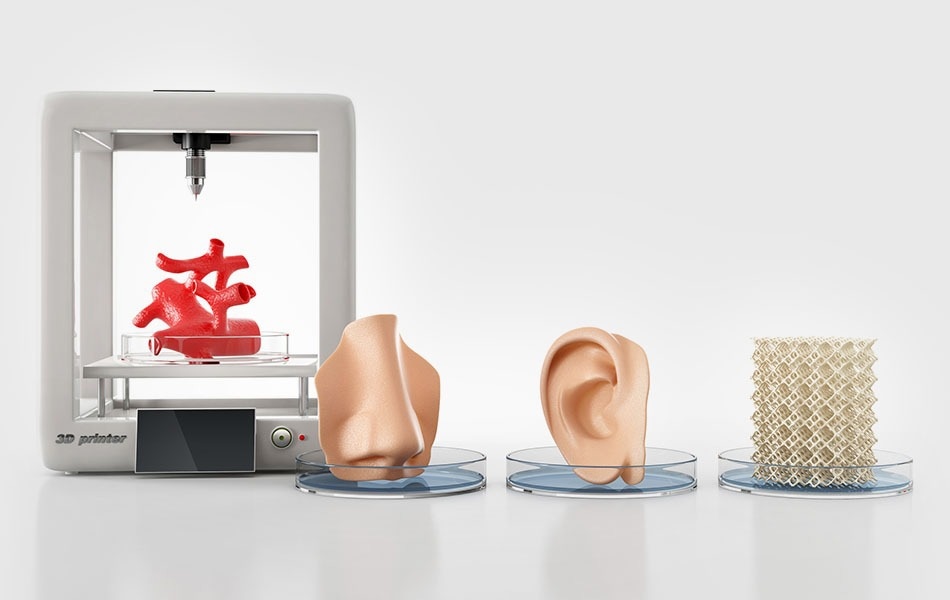 nine0003
nine0003
Nowadays, another interesting device has appeared that is used for manual printing - pens for drawing 3D objects. Pens are made in the same way as printers. The plastic thread is fed into the pen, where it melts to the right temperature and is squeezed out through a small nozzle.
Applications 3 D printing
- Building. There is an assumption that in the future the process of erecting buildings will be much faster thanks to 3D printing. nine0332
- The medicine. Thanks to 3D printing, doctors have been able to create replicas of the human skeleton. 3D printers are widely used in dental prosthetics.
- Architecture and design. Creating layouts of interior elements, buildings and districts allows you to evaluate the ergonomics, functionality and appearance of the prototype.
- Marketing and advertising allow you to demonstrate the benefits of a new product.
 nine0332
nine0332 - Education. 3D models are excellent visual materials for teaching at all levels of education.
- Automotive. Such a method as 3D modeling allows you to test the car at the development stage.
- Modeling. Production of packaging materials, toys and souvenirs.
- Light industry. Manufacture of various elements of consumer goods. nine0332
- Manufacture of clothes and shoes. Such clothes and shoes are used only at shows. The material here is polyurethane, rubber and plastic.
- Jewelry business. 3D modeling technologies allow you to create full-fledged products from metal powder.
- History and anthropology. Models are created on the basis of archaeological finds and allow assessing the reliability of scientists' guesses. nine0332
In all other areas not mentioned above, 3D modeling is gradually finding its way. Slowly but surely, it is crowding out other ways of representing an object.
Study of the use of 3 D printers in Rostov-on-Don
We conducted a market research on 3D printing services in the city of Rostov-on-Don.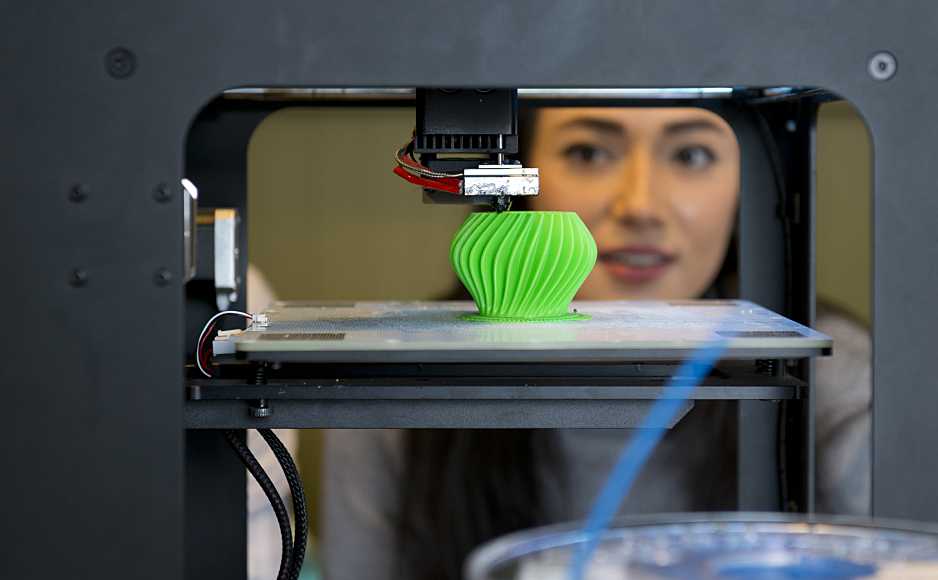
Here are the results: There are about 10 3D printing service points in this city, as well as several 3D scanning points. About 80% of customers deal with the tasks of manufacturing accessories, parts for personal projects. 8% try this technology by heart, the remaining 7% use 3D printing directly for work. Also, there is another group that uses 3D printing to create global personal projects. This group is only 5%. This percentage includes such a project as a “touching museum”. A group of students from Rostov-on-Don plans to create a network of museums in Russia using 3D printing and crowdfunding (crowd funding). The idea is to print on a 3D printer the world's works of art that can be touched not only by ordinary people, but also by those who have visual impairments. nine0003
To find out people's awareness of 3D printing, a survey was conducted among residents of Rostov-on-Don.
A different age contingent and different social groups were interviewed. As a result, according to a survey of 348 people, data was obtained: many residents (92%) are aware of the existence of 3D printing. Young people under the age of 30-35 are more aware in this area. Older residents of the city, if they know about such technology, do not dare to try it. Only 19% of the population knows that 3D printing exists not only from plastic, but also from metal. 45% of respondents are aware of the capabilities of a 3D printer and printing materials. But at the same time, only 15% of respondents used this service at least once in their lives, of which 3% used it often. Which suggests that 3D printing is not yet in great demand. But 80% of those respondents who had not heard of 3D printing became interested in this technology and expressed their desire to learn more about this technology. About 51% of respondents had heard of a 3D pen, but the majority had not used it. But quite a lot of people are ready to entrust their lives to new technologies. 50% of those surveyed would trust their lives to such technology. nine0003
Young people under the age of 30-35 are more aware in this area. Older residents of the city, if they know about such technology, do not dare to try it. Only 19% of the population knows that 3D printing exists not only from plastic, but also from metal. 45% of respondents are aware of the capabilities of a 3D printer and printing materials. But at the same time, only 15% of respondents used this service at least once in their lives, of which 3% used it often. Which suggests that 3D printing is not yet in great demand. But 80% of those respondents who had not heard of 3D printing became interested in this technology and expressed their desire to learn more about this technology. About 51% of respondents had heard of a 3D pen, but the majority had not used it. But quite a lot of people are ready to entrust their lives to new technologies. 50% of those surveyed would trust their lives to such technology. nine0003
Details are shown below.
Problems and prospects for using this technology in different areas of life
3D printing technology is not yet perfect. There are several problems that can lead to some rather unexpected results. For example, a printer printing several parts at the same time can print them linked together. Another problem is that due to the layered construction of the part, the lower layer may not withstand the weight of the upper layers, and then the part is destroyed. Before printing, it is necessary to carefully work out a computer model so that the result is the way it is expected to be. nine0003
There are several problems that can lead to some rather unexpected results. For example, a printer printing several parts at the same time can print them linked together. Another problem is that due to the layered construction of the part, the lower layer may not withstand the weight of the upper layers, and then the part is destroyed. Before printing, it is necessary to carefully work out a computer model so that the result is the way it is expected to be. nine0003
3D printing is the technology of the future. Every day this printing technology finds itself in new areas. Such a service is interesting in the field of entertainment: anyone can make a scan of their body and get their own miniature copy. In the field of medicine, the manufacture of shoes, insoles, and headphones is gradually entering the use, ideally repeating the shape of certain parts of the body or detailed parts for the functioning of the body, for example, a section of the human cranial cortex. The size of parts is gradually increasing, and the choice of materials for printing is also expanding.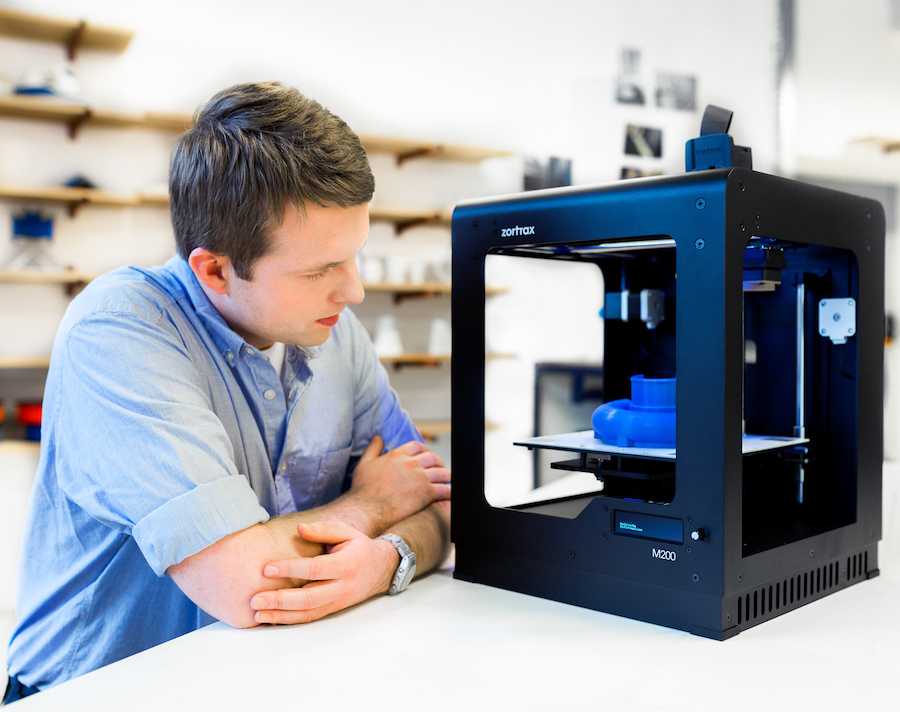 nine0003
nine0003
Conclusion
Summing up, it is worth noting that the use of 3D printers allows you to completely eliminate manual labor and the need to make drawings and calculations on paper, and eliminate the identified shortcomings not in the process of creation, but directly during development. In creating models using a 3D printer, there is no restriction on design and complexity of the form, which allows you to fully use your imagination and make an individual and original product. Products are very light, and at the same time their production time is minimal. nine0003
This technology is only gaining momentum in its development and distribution. This can be seen in the city that was chosen for the study - Rostov-on-Don. Most of the orders belong to the group of personal interest in the new technology and nothing more. But it is also impossible not to notice that the process of using 3D printing technology in large and useful projects for society is already underway.